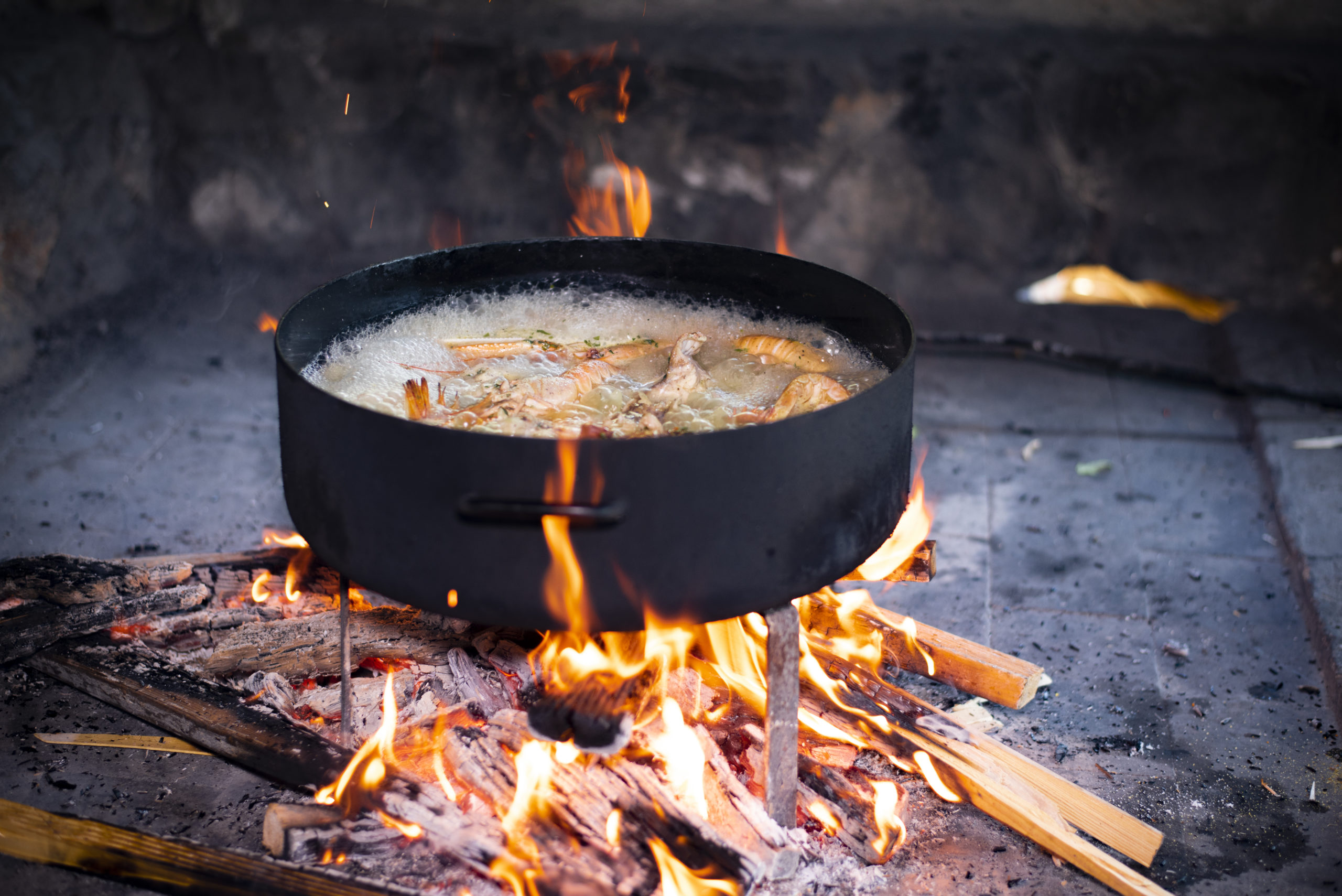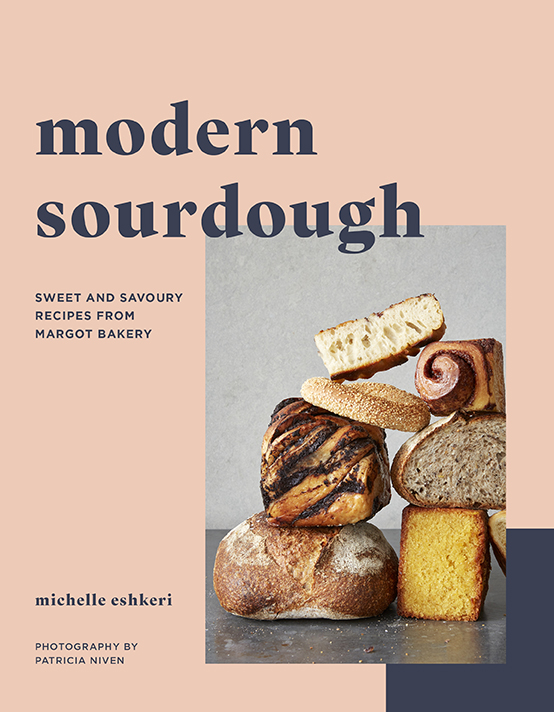
Weekend Journals are a series of beautifully curated guide books to Cornwall, London & Provence by Milly Kenny-Ryder. Each book takes readers through carefully sought out and discovered places to stay, eat, drink, shop and enjoy local culture. A family project, the books were shot by Gabriel Kenny-Ryder and designed by Simon Lovell.
With staycations still high on the agenda this year, Milly’s mini guide to Cornwall will convince you to discover and eat your way through one of the most beautiful parts of the UK.
In the last 10 years, Cornwall has changed dramatically with new boutique hotels, stylish seasonal restaurants and design-led shops complementing the county’s epic coastline and nostalgic seaside charm. My family has holidayed in rural Cornwall since I was a child and it’s these fond memories along with the creative and culinary transformation that led my company Weekend Journals to create a book about the best places to explore here.
Photography: Gabriel Kenny-Ryder
“In the last 10 years, Cornwall has changed dramatically with new boutique hotels, stylish seasonal restaurants and design-led shops complementing the county’s epic coastline and nostalgic seaside charm.”
Stay: Chapel House
If you have the time it is worth travelling all the way down to the tip of Cornwall, and more specifically to Penzance where the lovely Chapel House is found. This sophisticated, restored townhouse is on the corner of Chapel Street, one of Penzance’s most picturesque roads. Owner Susan Stuart has thoughtfully designed the six double bedrooms and two suites to offer guests a luxurious and serene place to stay. The communal areas are equally welcoming and in the downstairs dining room Susan hosts nourishing breakfasts and dinners, when requested.


Eat: Fitzroy
London foodies will know the Primeur, Westerns Laundry and Jolene trio of restaurants. Chef and co-owner of these eateries is David Gingell, who hails from Cornwall, so it makes sense that he finally decided to open a restaurant here. Fitzroy has put the small coastal town of Fowey back on the map as a foodie destination. The dining room is filled with furniture by local craftsmen, Able Provisions, and the food and wine is ultra seasonal and unique.
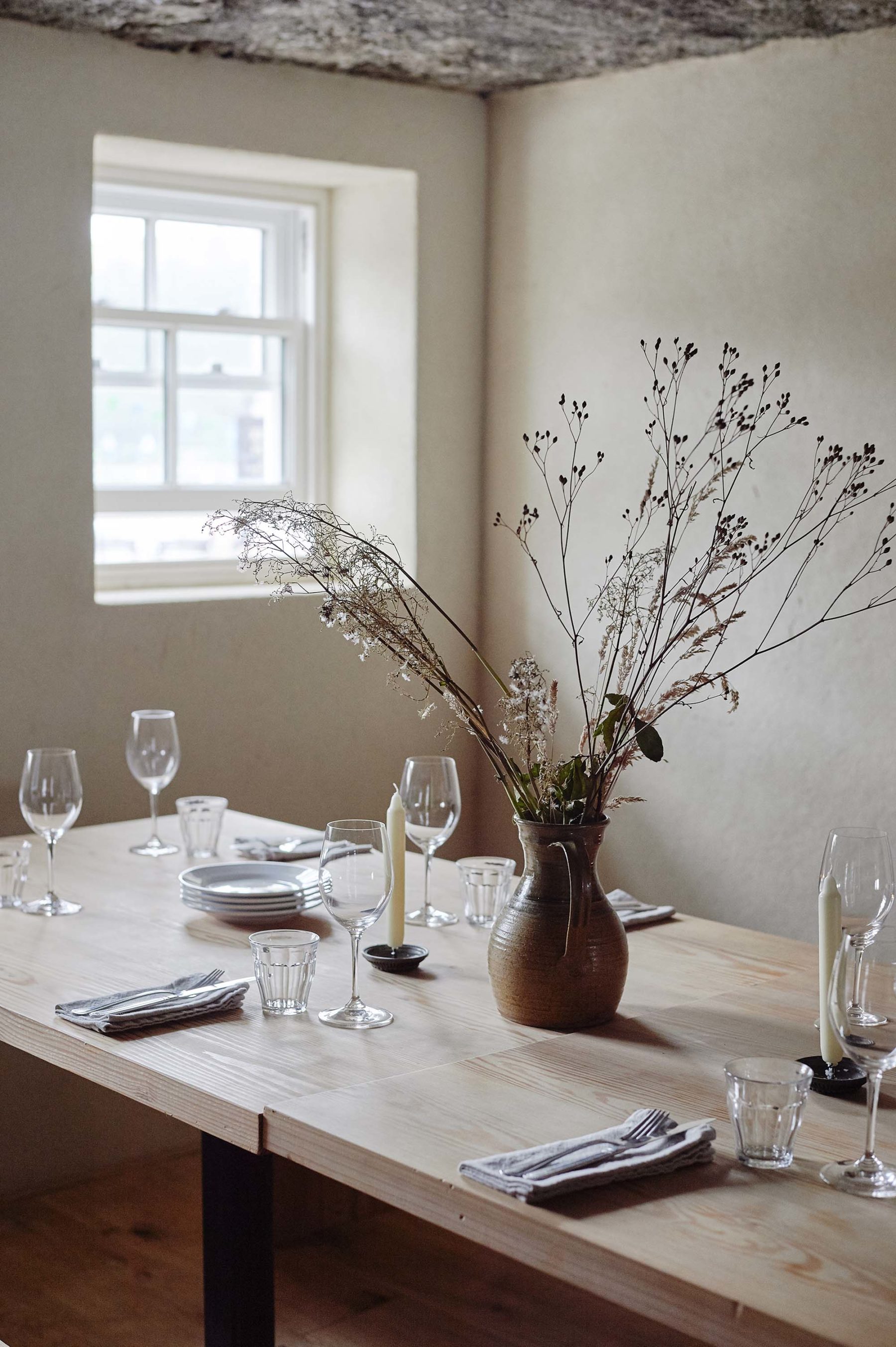

Bar: Seafood Bar by Verdant
Cornwall is known for its abundant, fresh seafood but it can be hard to find a place worth eating that isn’t overrun with tourists. This little, unsuspecting bar by Verdant Brewing Co was founded in 2014 by friends Adam, James and Rich. The cosy venue serves their unfiltered craft beer alongside an ever-changing menu of moreish seafood dishes.

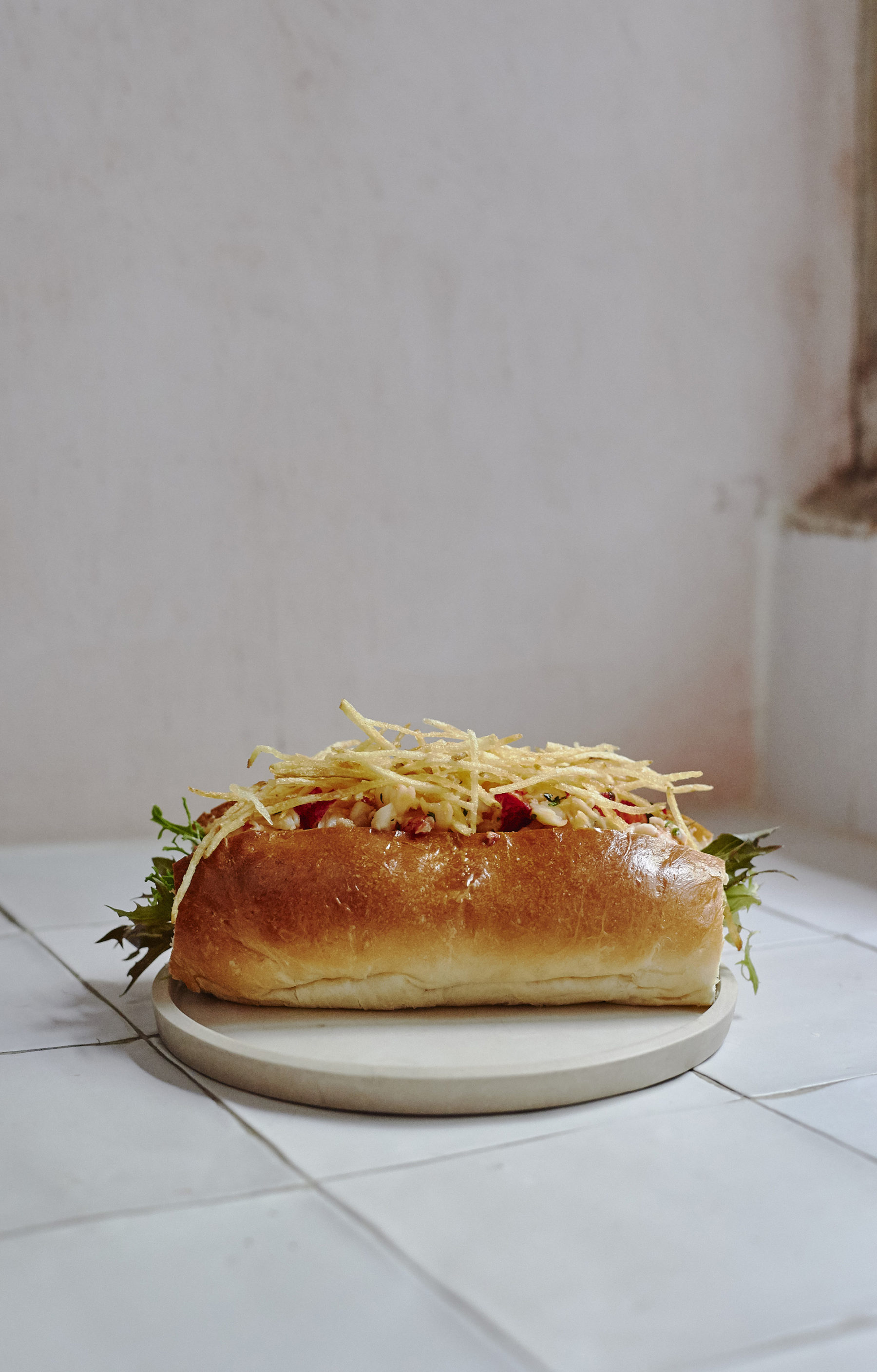
Coffee: Origin, Penryn
If you are a speciality coffee fan you’ll know Origin coffee, as this Cornish company now supplies beans to some of the best coffee shops in the UK. Origin was founded in 2004 by Tom Sobey and the company’s first coffee shop opened in Porthleven in 2013. As their reputation grew so did their family of coffee shops, The Warehouse is a gem on the sleepy Penryn high-street. Serving hearty brunch dishes alongside their unrivalled single-origin coffees, it is the perfect weekend destination.
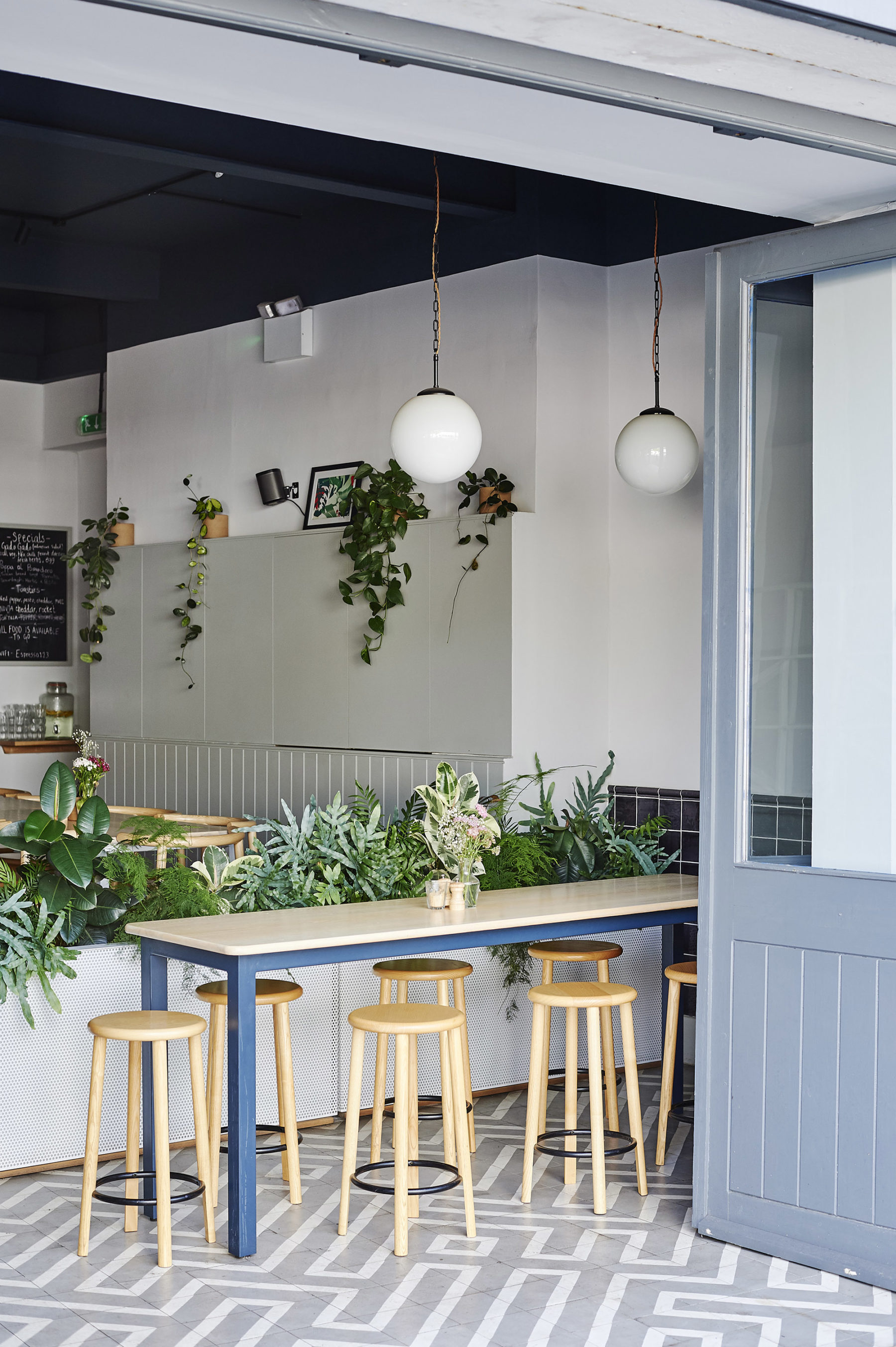

Shop: No.56
I never leave No. 56 empty handed. This charming boutique in Penzance has a beautiful curated selection of ceramics, stationery and garments, some of which are designed by the shop’s owner Carole Elsworth. Pick up a plate from local potter Rebecca Proctor, a bottle of J Herbin violet-scented ink or a few beeswax candles.
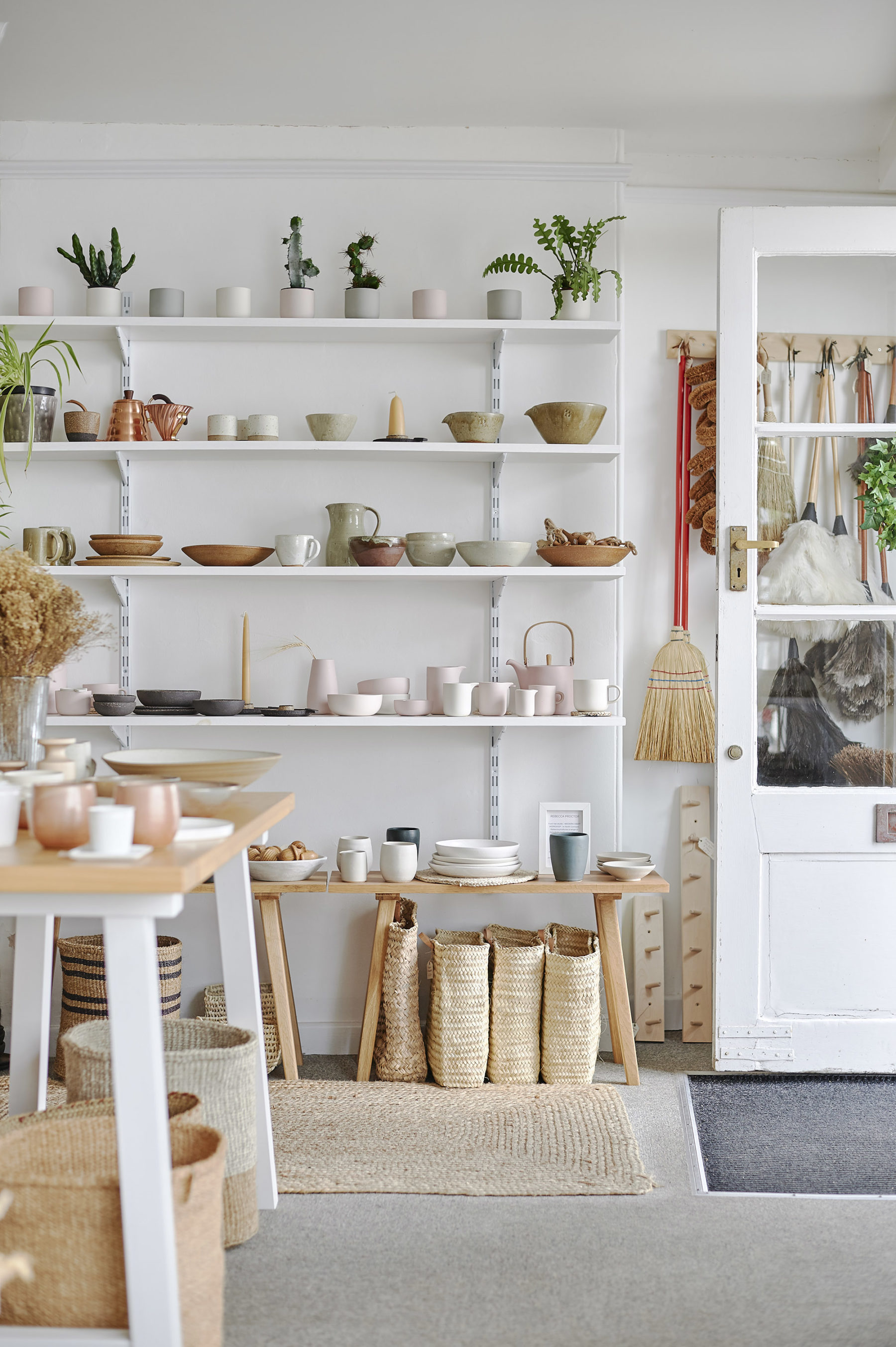

Experience: Hidden Hut
Cornwall’s feast nights are unbeatable and none sell out faster than Hidden Hut. Simon Stallard’s famous feasting events take place on the Roseland Peninsula, on a patch of rugged coastline. Guests bring their own plates and cutlery and gorge on Simon’s appetising seasonal food, anything from paella to whole grilled Cornish lobsters. The rest of the time Hidden Hut operates as an unassuming café; stop by for a pick-me-up pasty on a beach walk.
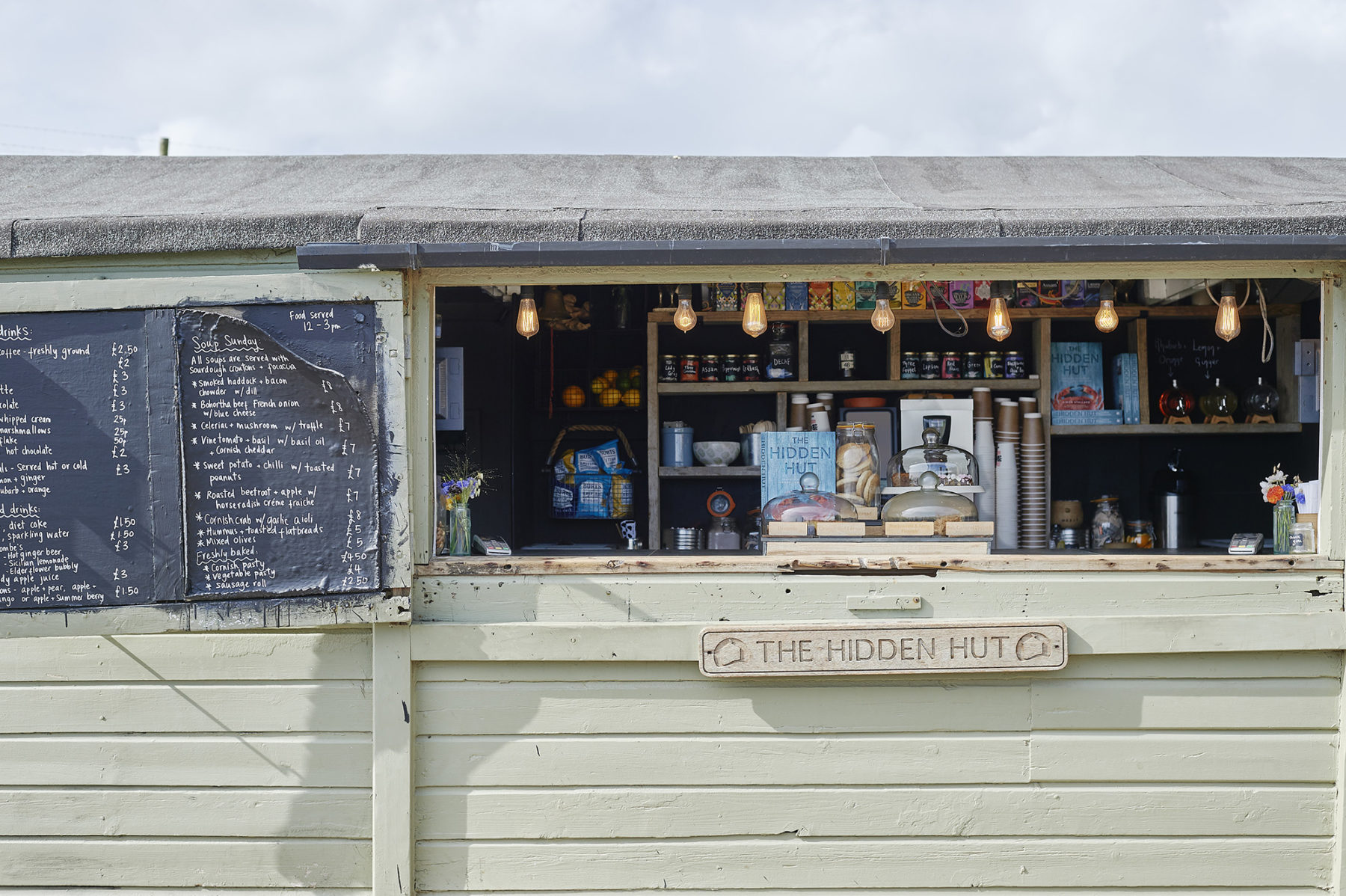
Art: Barbara Hepworth Museum and Sculpture Garden
There is something beautifully solemn and calming about the Barbara Hepworth sculpture garden in St Ives. Quietly nestled amongst tropical plants and flowers are some of Hepworth’s most magical works. St Ives has a long history as a home for major artists and potters, Barbara Hepworth is undoubtedly the most prolific and a trip to this museum and garden is always memorable.
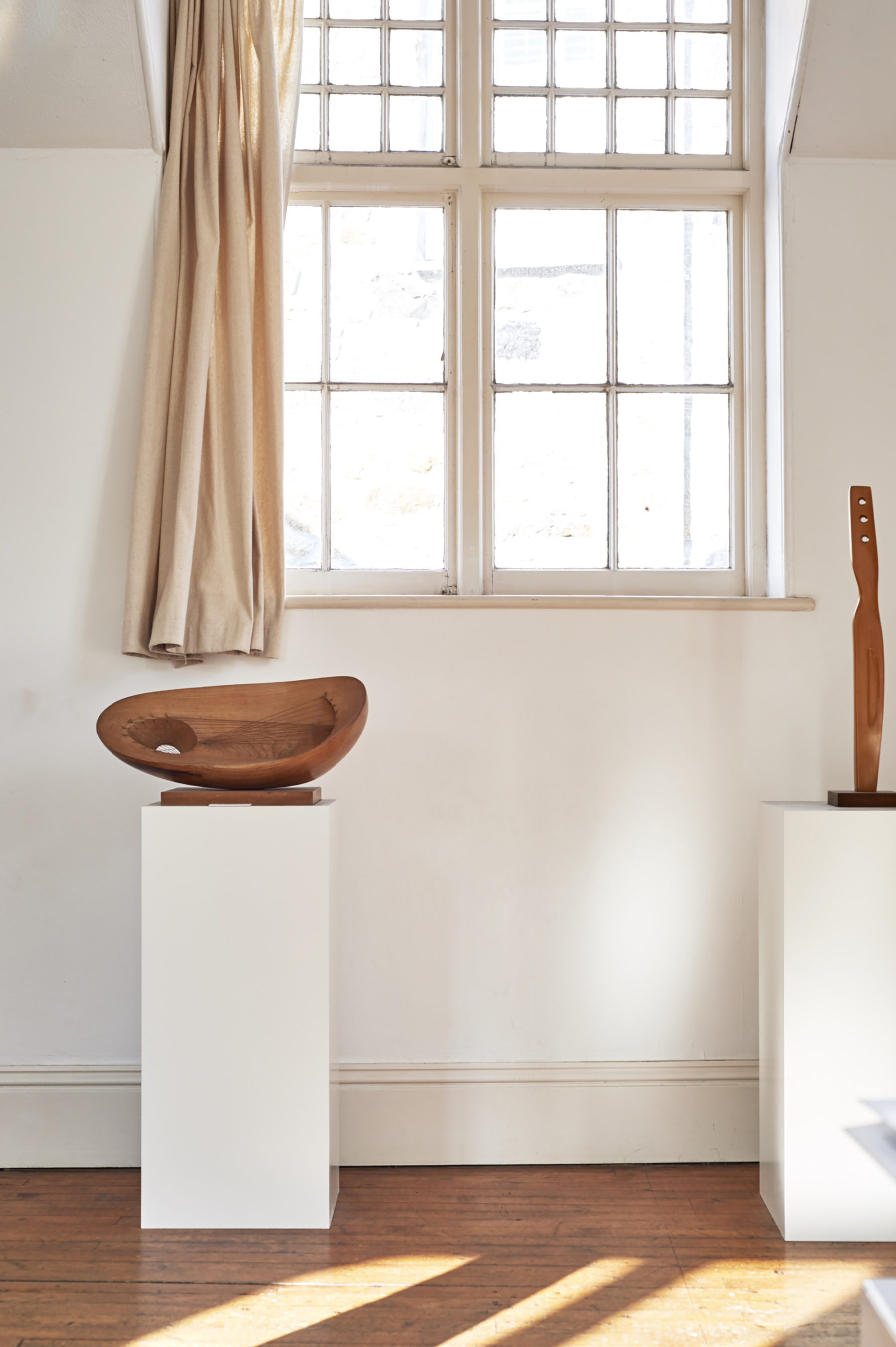
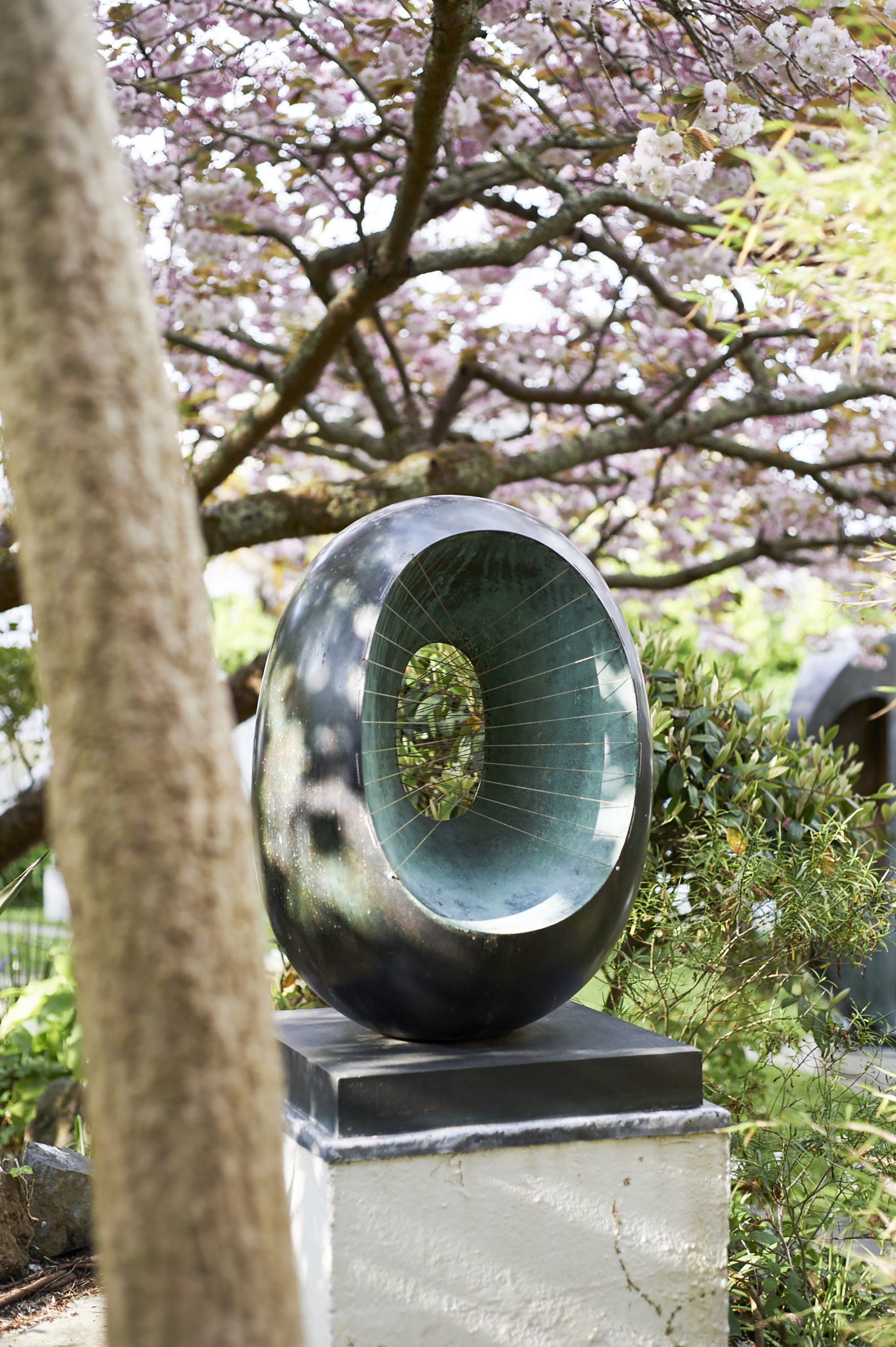
Visit: The Minnack
Hidden away on the scenic cliffs of Porthcurno is the enchanting Minack Theatre. Built in 1931 by Rowena Cade and her gardener, this al fresco theatre is a magical place to see musical and theatrical shows. Sometimes visitors may even catch a glimpse of dolphins jumping through the endless azure sea in the theatre’s background.

Read more: Weekend Journals, Cornwall
Cornwall is one of the most beautiful parts of the UK, but it’s also an intimidating one to navigate. There is so much to see, do and eat on every side of the peninsula, so if you’re looking for a bible to guide you through your trip, this is exactly what you’re looking for. Follow @weekendjournals for more inspiration too.

Lulu, Jess and Liv founded SSAW Collective — that is, Spring, Summer, Autumn, Winter — back in 2019. As a chef and two florists, and ultimately as friends, they came together and realised that their respective industries, and the farming methods that have been traditionally used, were in need of radical change. We sat down with the three of them to chat about what we can do to play a positive role in that, and how seasonality affects so much more than we think.
Tell us a little bit about the story behind SSAW.
Lulu had been a chef in London restaurant kitchens for years whilst both Liv and Jess had met working as freelance florists on large-scale events and weddings together. Late 2019 all three of us were becoming increasingly disheartened by the ways in which our respective industries were directly impacting and damaging our environment.
“For our planet, and for humans, animals and soil to live and thrive, we need to work with nature as opposed to against it, and that is exactly what we at SSAW are focusing upon, whether it’s through events or campaigns.”
We were also beginning to take growing more seriously, having all spent some time working on and researching regenerative farms and recently taken on some land of our own to grow on.
When the pandemic hit, work in the hospitality industry ground to a halt but we had a lot of flowers in our fields that we needed to shift! That’s where it all began — we quickly realised that by joining forces not only as growers but as a chef and florists, our work is intrinsically linked and directly relatable once you consider that farming is the glue that holds the food and floral industries together. Alongside growing, our focus is on putting together events in collaboration with other like-minded businesses. We have set out on a mission to advocate for positive change in farming, food & flowers — acting as a platform for existing change-makers.
We love encouraging conversations between people, and we hope they will inspire and trigger the changes we so desperately need for a healthier future planet and people on it!
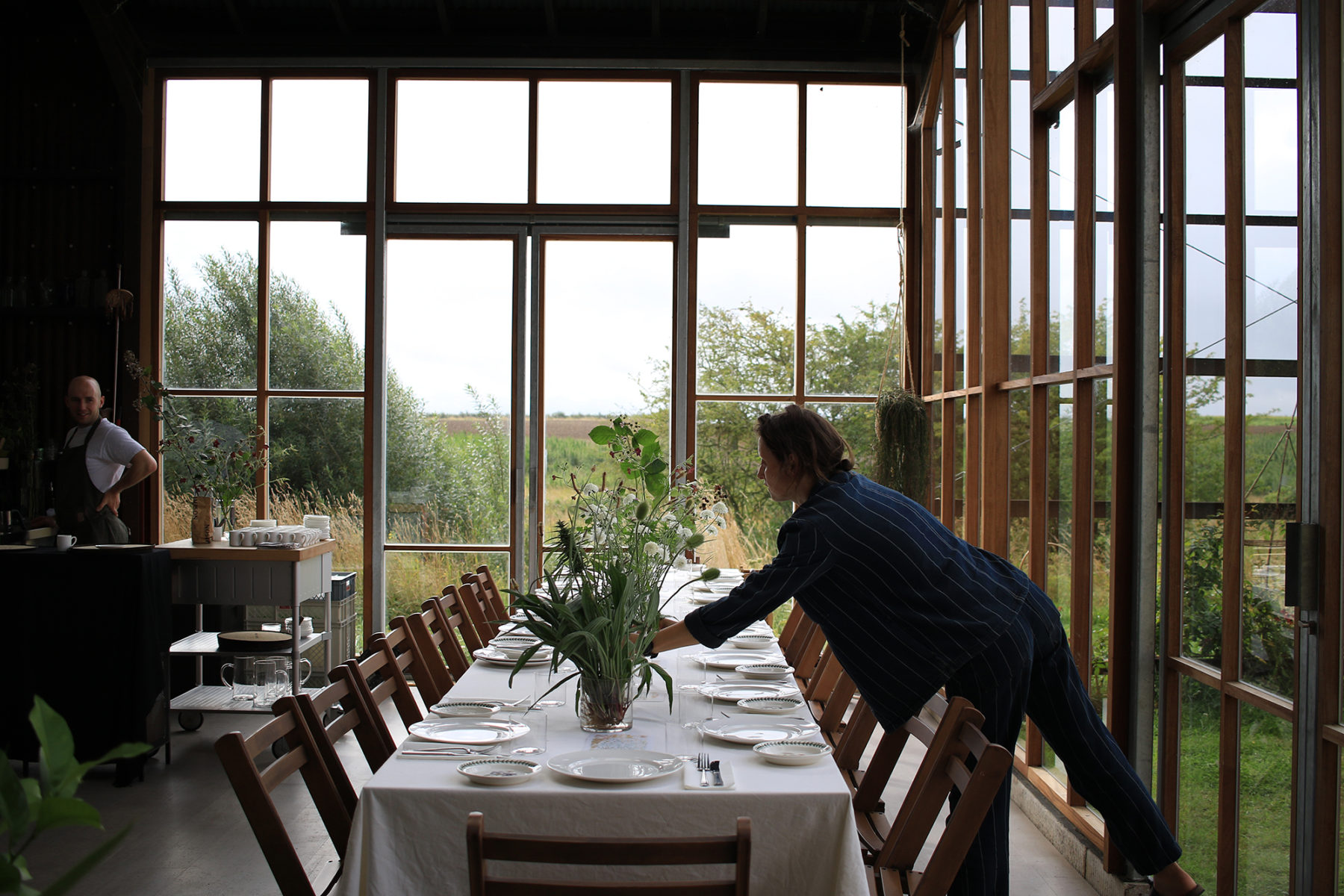
We don’t talk about seasonality often enough, and many people many may not realise that flowers run in seasons in the same way as food. How can we make more informed choices when buying flowers?
Avoid supermarket flowers that are grown abroad and or don’t specify where they are grown. Take note of the green spaces around you, of the plants in bloom, and know that’s a safe choice. Get familiar with the flowers in your surroundings. A lot of this is common sense — if it looks tropical, it will have been grown and flown from far away! The best thing you can do is talk to your local florists or seek out a local grower if you live rurally — chat to them about where their flowers are coming from.
You work exclusively with farmers, growers and makers that work regeneratively with the land. What does that mean and why does it matter for both food and flowers?
Working with regenerative produce in short means that the production of the plant in question is giving back to nature: it’s regenerating the ecosystem that it’s a part of, whether that’s through helping soil structure, insect population, fixing nitrogen through its roots etc. When we are taking something away we need to make sure it’s given back so as not to create imbalance.
There are numerous ways in which this can happen, such as (but not limited to) attracting pollinators, increasing insect populations through habitat creation, providing the soil with a natural source of nitrogen, or sequestering carbon through photosynthesis. Globally, we have practised incredibly extractive farming techniques that have prioritised yield, often in monocultured environments that disregard the importance of regeneration. Yield is boosted by chemical fertilisers, and it becomes a vicious cycle whereby the soil is no more than a medium for the roots to sit inside. No diversity, no nutrients, no life. In order for our planet to stay healthy we need to prioritise nurturing the system. For so many years we’ve gotten away with this extractive way of living, but with an expected population of 10.9 billion by the turn of the century we simply can’t continue in this way, whether we’re talking extracting natural resources for fuel, foo, textiles, you name it.
For our planet, and for humans, animals and soil to live and thrive, we need to work with nature as opposed to against it, and that is exactly what we at SSAW are focusing upon, whether it’s through events or campaigns.
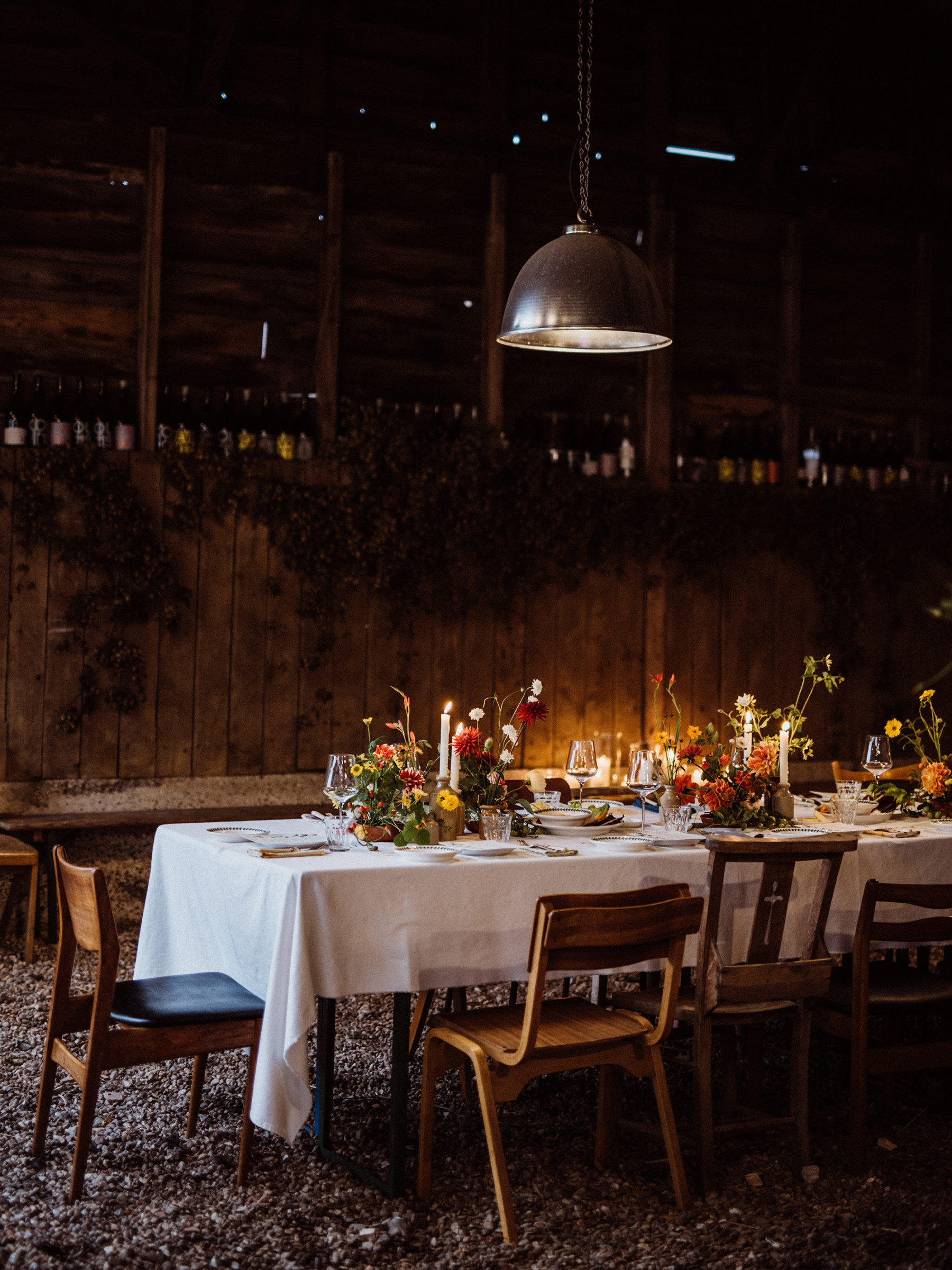
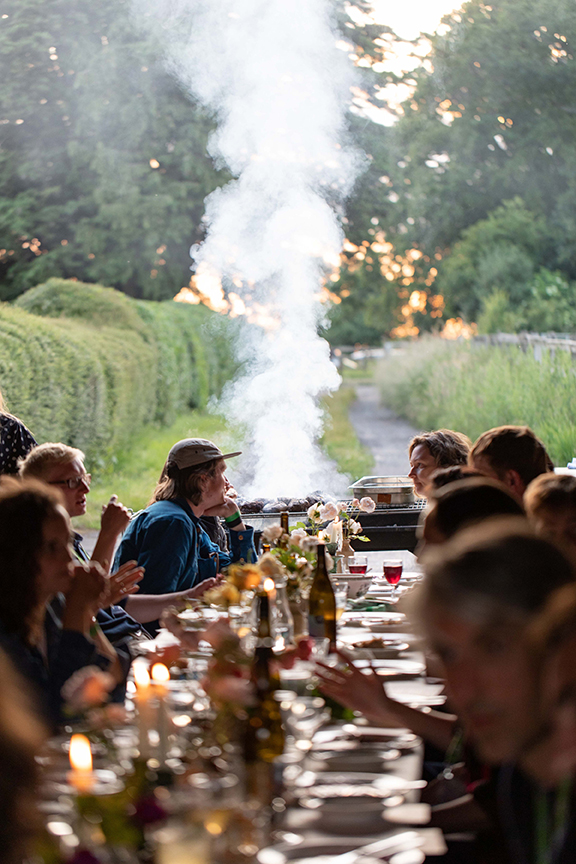
How do your various experiences and your expertise — Lulu, yours in food and Jess and Olivia, in floristry and growing — feed into what you do and how you push for change?
We love spending time getting to know suppliers and learning about their practises, whether they’re fellow chefs and florists, farmers, growers and artists. This feeds into our practises in several different ways. We have a journal on our website where we talk about other inspiring stories. We love this feature as it extends our community and acts as a platform for change-makers in the regenerative and ecologically minded space. A regenerative mindset is not limited to farming alone; there are so many industries that are interconnected, which is why we are so excited about bringing people together from various backgrounds and interests to talk about how their work can make a difference.
As a three we share the same artistic vision and genuine appreciation for the beauty in simplicity. The impact a single flower can make on a countertop bud vase, the satisfaction of podding fresh broad beans to eat immediately with a hard, salty cheese, or last minute addition of nasturtium flowers to a salad. There is a lot of room for clutter and excess in event production, but we are united by resourcefulness. The restrictions on which ingredients we use means we have to be braver when making creative decisions. When it comes to planning an experience where the provenance of every element is considered, not only produce and flowers but crockery, glassware and cutlery, we never cut corners or make exceptions to our ethical standards.

Let’s talk about Roses. Why shouldn’t we be buying them in February, and what are the alternatives?
February is the time to prune a rose in the UK, and they bloom from late May/early June through the summer, sometimes returning for a second flush in early Autumn. They are the last thing you’d expect to see in flower in February, so to us it feels completely unnatural to be buying them at this time of year. The roses you see for sale in shops and supermarkets for Valentine’s day will have been grown either in Dutch hot-houses or flower farms farther afield in Kenya or Ethiopia for example, where pesticides remain unregulated and working conditions as a result of this are also unsafe. There’s a myriad of other complexities in the supply chain that make buying imported flowers very difficult to do with 100% confidence in traceability. Just like when buying fresh produce, the closer you can get to the grower the more likely you can be sure of the way in which it was grown, who it was grown by and with what principles in mind.
There are so many gorgeous alternatives to a rose for your Valentine — we are offering little pots of snowdrops or bunches of cyclamen — both native British blooms that coincidentally symbolise love and longevity in the language of flowers. We’re also selling “Why Buy Roses in February?” posters by the artist and printmaker Rosanna Morris. Seeds make excellent gifts too — we think there’s real romance in the promise of flowers in the summer months!
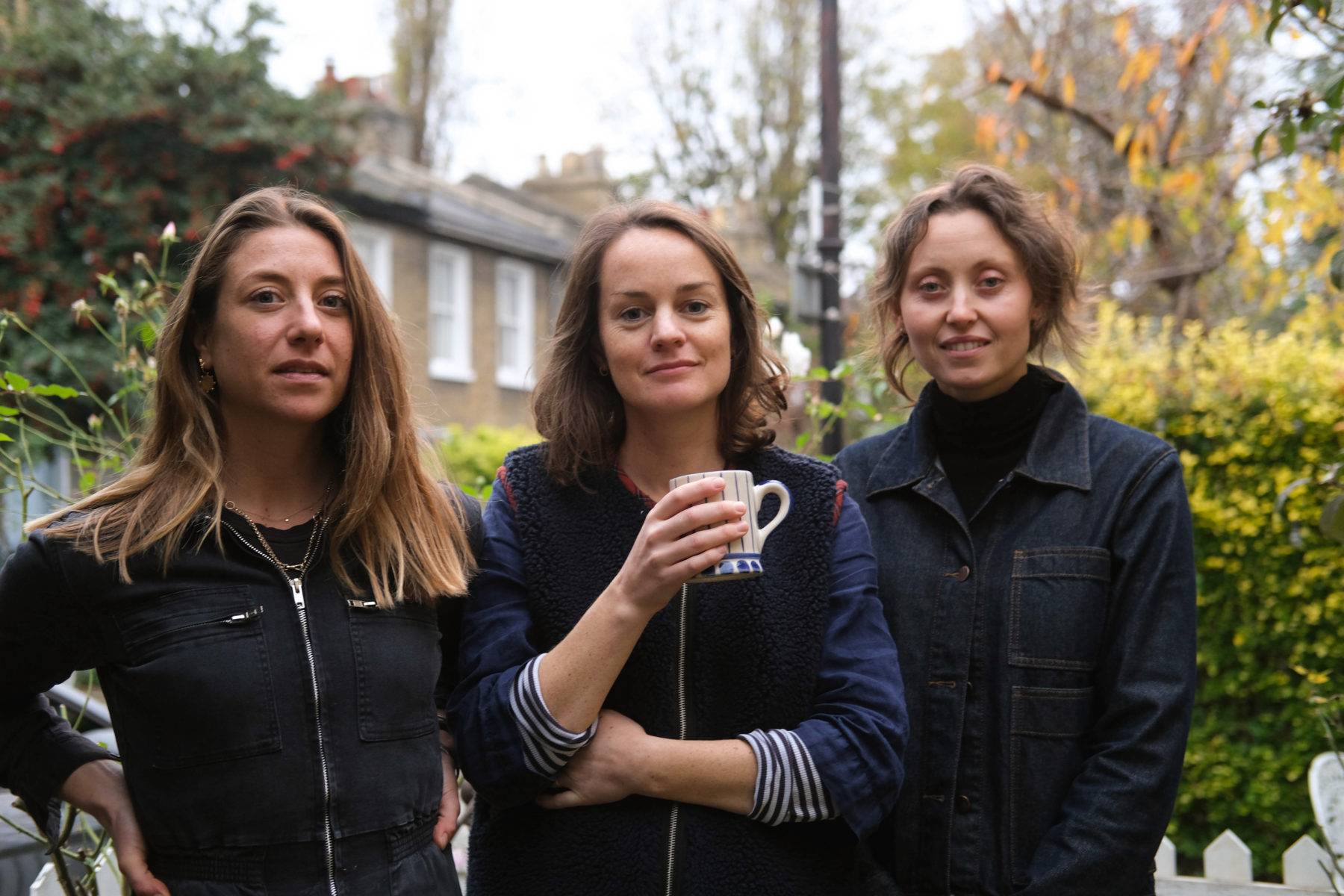
Tell us a bit about Rosanna Morris and why you chose to work with her for your “Why Buy Roses in February?” campaign.
We had been great fans of Rosanna’s work for years so we were really touched that she was on board with the topic when we approached her. She has a knack for finding and creating beauty in difficult or ugly topics and it is that sense of hopefulness that we wanted to channel in our approach too. Facing up to uncomfortable truths is hard but we want to be gentle with each other, creating a safe space to have conversations without the fear of shame or retribution. We wanted the posters to be something people would feel empowered by — we hoped that hanging them on our walls would remind us to continue thinking about the importance of provenance and considering seasonality all year round.
From food to flowers — what will be on your table in February this year?
We’re hoping the first anemone from inside the polytunnel in Essex will have flowered in time for Valentines’ Day — it’ll be a single tiny bud vase on Jess’s table if that’s the case! Or else Liv might bring back the tiny blue muscari bells that are popping up in her fields in Herts, so small but so sweet and scented too.
It’s a wonder to have Seville oranges through the door, and forced Yorkshire rhubarb has firmly arrived. Whilst we have to wait patiently for the spring summer vegetables to arrive, Lulu’s enjoyed trying out different recipes with Hodmedods British grains — things like Naked Oats have been a revelation, they are delicious and a highly nutritious replacement to rice.
SSAW Collective’s Pantry
Five items that you always have in your pantry, or couldn’t live without.
- Fresh bay leaves
- Two Field Zakros olive oil
- Hodmedod pulses and grains
- Ortiz salted anchovies
- Dried camomile for tea
Read more: SSAW Collective
SSAW Collective’s online journal is full of stories from other inspiring change-makers and like minded businesses. They’re gradually building a community to help advocate change and emphasise the importance of seasonality, provenance and regenerative farming practices. Explore their website to find out more.

You’ll probably know Robin Gill as the man behind The Dairy — the neighbourhood restaurant that brought seasonal small plates to Clapham back in 2013. Sorella, Counter Culture and Darby’s might sound familiar too. Perhaps you don’t yet know though that in 2019, Robin embarked on something a little bigger. Working his way north of the river, he now heads up the food at Birch, a retreat just outside central London.
It’s not immediately obvious from the stately exterior that much of Birch’s fifty-five acres of land are dedicated to food and farming. With a kitchen garden, a vegetable patch, beehives, as well as pigs, chickens and sheep, the food at Birch is very much led by nature and what grows on the land. We sat down with Robin to chat about his latest farm-to-table project and how this time, he is able to prioritise flavour, process, simplicity and nature in a way that he hasn’t before.
“I really admire cooks that take a vegetable like fennel and use it all, and just let it sit naturally on a plate. I think it’s easier to cook like that too. If you’ve got really nice produce that’s super fresh, it’s actually a much nicer and easier way to put food together.”
Robin, what brings you way up north from Clapham up to Cheshunt? What attracted you to Birch?
The space! I’ve always wanted to get involved in a space like this where we could grow on site. I thought I would probably do it in Ireland and didn’t ever get around to it, but I knew exactly what I wanted to do. I got introduced to the guys behind Birch through a mutual friend and we came up here to have a look about a month later, so I was involved from the really early stages.
The initial plan wasn’t necessarily as extensive as what we’ve ended up achieving — which is to grow our own produce, have a bakery, a few restaurants etc — but then we came up and mapped out the area, and it all very quickly became part of the planning. I then started to bring on people from my community and get them involved the project, like Ben Rand, who’s worked with me since we opened The Dairy.


Your cooking has always been defined by a seasonal, local food philosophy. Where did that love for cooking with nature and being in tune with the land come from?
I was exposed to it when I was very young. I used to go spend summers down with my auntie in Cork where she had an organic vegetable farm. My brother used to work there — he made bread all the time and he cured his own meats, so I would’ve seen it, but probably not taken that much notice of it as a kid. It was only when I started cooking that I was exposed to it a little bit more.
Then there was one place I worked at later on in particular in Naples in the south of Italy, Don Alfonso. He had a farm on the Amalfi Coast and it was so interesting to see how he operated it. The restaurant had two-Michelin stars and Don Alfonso used to spend all of this time in the farm and bring all the produce to the kitchen. It was almost like he was facilitating the cooks with a great kitchen and the best produce, and he was like ‘right, now make something nice with it!’.
The approach to the cooking was really simple. I was used to working in quite prestigious French restaurants where there was a lot more technique involved, but I liked the simplicity. As you get older you also get a little bit more confident doing things like that. When I first started cooking it was more like ‘okay, I can do 18 things to a cauliflower’, but now I know it doesn’t mean you should.
That kind of ‘farm-to-table’ attitude has been the natural way of life in most of France and Italy for a long time, but it’s only recently slowly been gaining more traction here in the UK thanks to chefs like yourself. Why do you think it’s happening now?
I think it’s a combination of things. It’s about the time the UK was influenced by what’s been going on in France and in Italy for many, many years. It’s really nice to see. What’s interesting is that you see more and more restaurants in the city being more obsessive about it. That was my goal when I was opening The Dairy, I wanted to try to emulate that farm-to-table philosophy as close as I could.
There was a time when people were looking at things like molecular gastronomy and honestly, I never liked it. It never sat right with me. Why would I want to make a powder out of this or that? It didn’t feel natural, so I’ve been really glad to see that culture changing and becoming very much more about the produce and zero wastage as well.
I admire cooks that take a vegetable like fennel and use it all, and just let it sit naturally on a plate as it is. I think it’s also easier to cook like that too. If you’ve got really nice produce that’s super fresh, it’s actually a much nicer and easier way to put food together.


You’ve always been focused on individual ingredients, even back when you had The Dairy. You had bee hives on the roof of the restaurant and honey was always a big part of the menu. Why did you decide to bring that over to Birch?
It’s that full circle thing. The honey and the bees became almost a signature of The Dairy, which essentially was a really tiny version of what we’re doing here.
You get that sense when you’re in the dining room from the pass, the open fire, the music — it’s about trying to create a great atmosphere but backed up by something that’s responsible and exciting, and completely produce and craft-led. It’s all the small things we learned to do at The Dairy and now I’m able to do it on a bigger scale.
It’s almost ironic that the closure of The Dairy happened as we were opening at Birch. They’re so similar.
You definitely have a lot more space to work with here. What does access to this land and this farm afford you both in terms of growing and cooking?
We’re only just starting the growing process and it needs a lot of planning, but it does allow us to be more creative. We’re going to have trial and error all along the way, but it’ll be exciting to see how it changes and how we can make sure that we’re getting things all year round. We’re working with Birch’s farmer Tom Morphew on that.
When you’ve got access to produce in abundance, there’s preservation as well. You ferment it and the flavours continue on and it gets really exciting. At the moment we’ve got some artichokes from last year and we’ve made elderberry vinegar too. You can jazz things up when you’ve got ferments and pickles from seasons before. If you can have something from summer to add to an autumn menu or vice versa, I think that’s really interesting.
Within the industry it’s easy to be in tune with those ways of cooking, but as home cooks it seems we have lost touch with seasonality and that sense of knowing where our food comes from. How can we go back to thinking about local, seasonal, carefully grown produce, not just in restaurants but in our homes?
It’s by searching out those farmers markets and by supporting them. There are more and more popping up all of the time. And if the consumers start to demand that, we might even see more locally farmed produce in the big supermarkets. I’ve even seen Lidl have started bringing in some decent produce from local farmers rather than the mass-produced stuff.
It’s strange — if you’re in a little village in France or Spain, there’s always a fruit and veg shop. What happened to those shops here? A lot of them have gone, but I think they’re coming back. During lockdown I saw two or three even pop up in Clapham which is great. Natoora is also a great example and you’re starting to now see them in supermarkets. They’re representing smaller farms, and it’s companies like that, they’re the ones that are big enough to have an impact and give the consumer access to that produce. It’s expensive but it should be expensive.


With the Zebra Riding Club you also place a lot of emphasis on wood-fired cooking, why is that?
We designed the kitchen in a way that meant we only have two induction hobs and everything else is led by fire. It’s a bit of a romantic way of cooking but it’s also a way of enhancing a lot of products. Not burning stuff, but enhancing them with a little element of smoke. It’s a really nice, natural way to cook and again, it just feels right. You’re not in this big glitzy lab-like kitchen with electricity everywhere. We feel like we’re craftspeople.
It’s good for the cooks too. There’s something really rewarding about building a fire and controlling it. We temper our ducks slowly over the wood and then blast them with a naked flame. I think the chefs feel like they’re actually cooking something. Thinking about the history of the estate, this is how people would’ve cooked 200 years ago, so we’re only trying to go back to how it was always done. It’s funny, we were credited with creating this new way of cooking or ‘modern gastronomy’, but there’s nothing new about what we’re doing whatsoever.
I’m not a preacher of sustainability but I am doing it because I enjoy it and it feels right for me. It then attracts the right people to come and work with us and eat with us too. It’s not to tick a box or because it’s fashionable. It actually takes a lot more work in some ways.
Are there any goals you have for the restaurant and the land for the future? What do you want to do next?
When we first sat down and planned, it was very much a discussion on how to be low impact on the environment and become completely self-sustaining.
In terms of growing, we’ve mapped out the areas — we want to bring back the walled garden, and we’re getting a polytunnel for the land down by the sheep. We’re saving all the pallets we get from deliveries to also build some raised beds. We might do a sunflower field too. We’re also about to develop our own charcuterie programme from our pigs, maybe we’ll have a dairy in time.
You know, I’d also love to invite other craftspeople onto the land. Let’s say we’ve got someone that wants to get into smoking and we gave them the space, they could smoke for us and sell their produce, and we could work together. It’d be nice to get a big proper orchard going on and our own cider. There’s also a massive cellar which we haven’t utilised yet, originally it would’ve been for storing vegetables and allowing them to mature, but we could have our preserves down there. It’s endless.
What’s in your pantry?
1. Aged parmesan
2. Capers
3. Really good olive oil
4. Tabasco
5. Anchovies
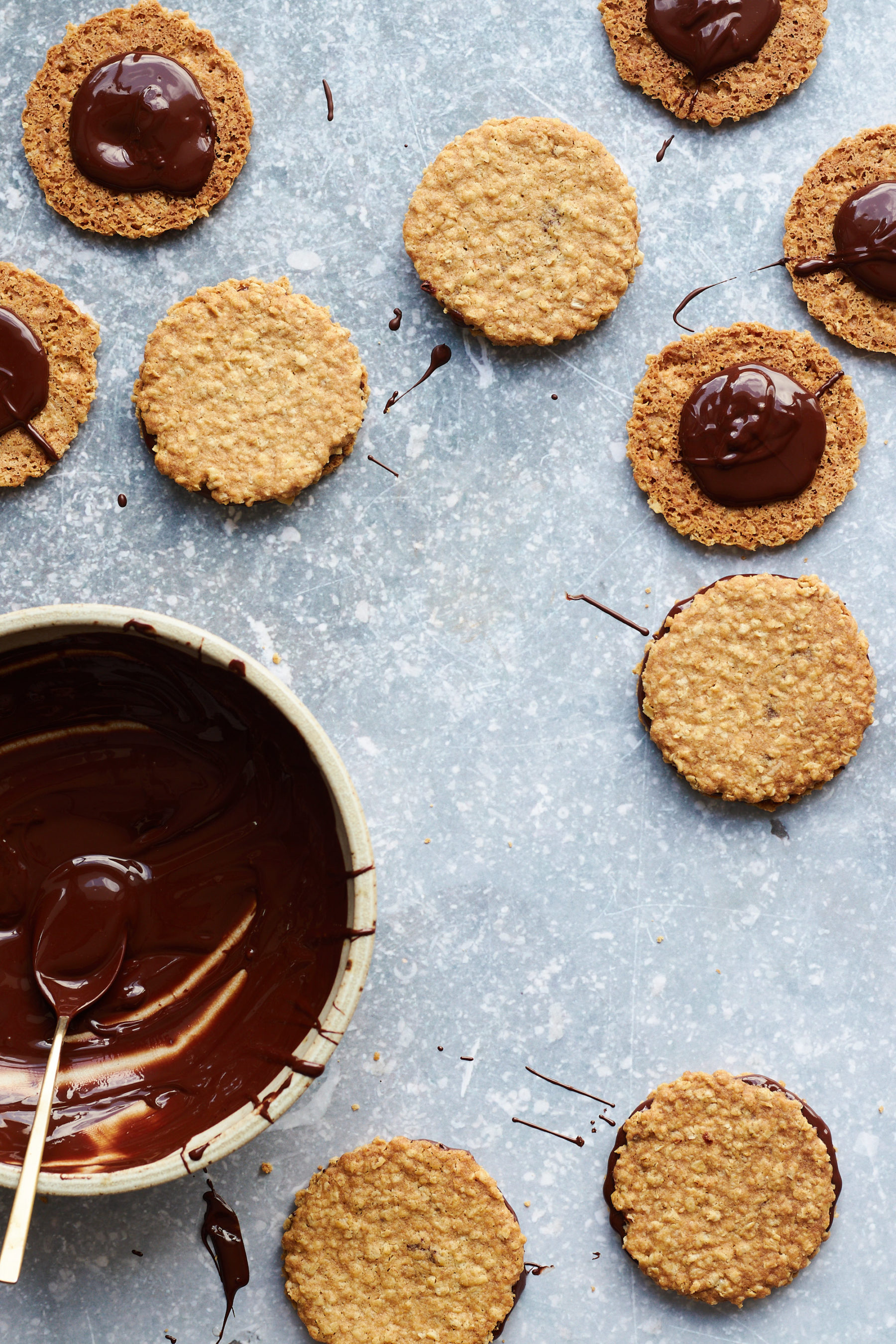
Nicola started sending out her newsletter Kitchen Projects back in December 2020. Since then, she’s been sharing creative, seasonal recipes, both savoury and sweet, every week to her growing list of subscribers. For each recipe, she delves into the science, techniques and processes — it’s exactly the kind of reading you need when you’re looking to level up your understanding of the kitchen and what you’re cooking. Here, she shares the know-how behind her 3pm chocolate oat biscuits — read ahead, before you go and bake the recipe here.
A few months ago I was at my friend Alice’s house. She asked me if I’d ever tried the oaty biscuits from IKEA. I hadn’t. I had a feeling that my life was about to change in some way. She kindly popped into her kitchen and came back with a hall-of-fame-worthy biscuit. If you haven’t tried them, these ‘KAFFEREP’ fellas are a good time: two crispy crunchy oat biscuits sandwiched with dark chocolate. A bit like a double backwards hobnob – totally magic.
“If you haven’t tried them, these ‘KAFFEREP’ fellas are a good time: two crispy crunchy oat biscuits sandwiched with dark chocolate. A bit like a double backwards hobnob – totally magic.”
After posting a picture of this very special biscuit on Instagram, I got a bit more intel from you all. It turns out they are a take on a Swedish classic known as ‘havreflarn’. And, judging by the enthusiastic DM responses, these little oat biscuits have got a LOT of fans. Or should I call you ‘flarns’? (sorry).
I threw a recipe together and fell in love with the ultra crispy results. I really think these are the perfect 3pm tea/coffee companion mood boosters.
To all the oat biscuits I’ve loved before
To get started with this recipe, I thought back to the great oat biscuits I’ve made and enjoyed over the years (beyond hobnobs, ofc):
My first great oat cookie experience was the oat cookie crust of the ‘Milk Bar’ (formerly ‘crack’) pie. You can get this recipe in the iconic Milk bar cookbook – you start by making a super gooey melted butter oat biscuit dough which you then bake, blitz and then bake again with more butter. Dream.
Another unforgettable was at Little Bread Pedlar, Nicola (who now makes beautiful pottery) – the co-founder and the OG croissant impressario – made the most incredible cheesecake base with big chunky old fashioned oats. You know the love is real when a kitchen makes something painstakingly, only for it to be blitzed up hours later.
Taking inspiration from these and applying some good old food theory, I’ve created a recipe that I’m so excited to share with you. Made correctly, these biscuits will fall apart in your mouth. They are ridiculously short and crumbly – and a genuine joy to eat.
Let’s get on with it, shall we?
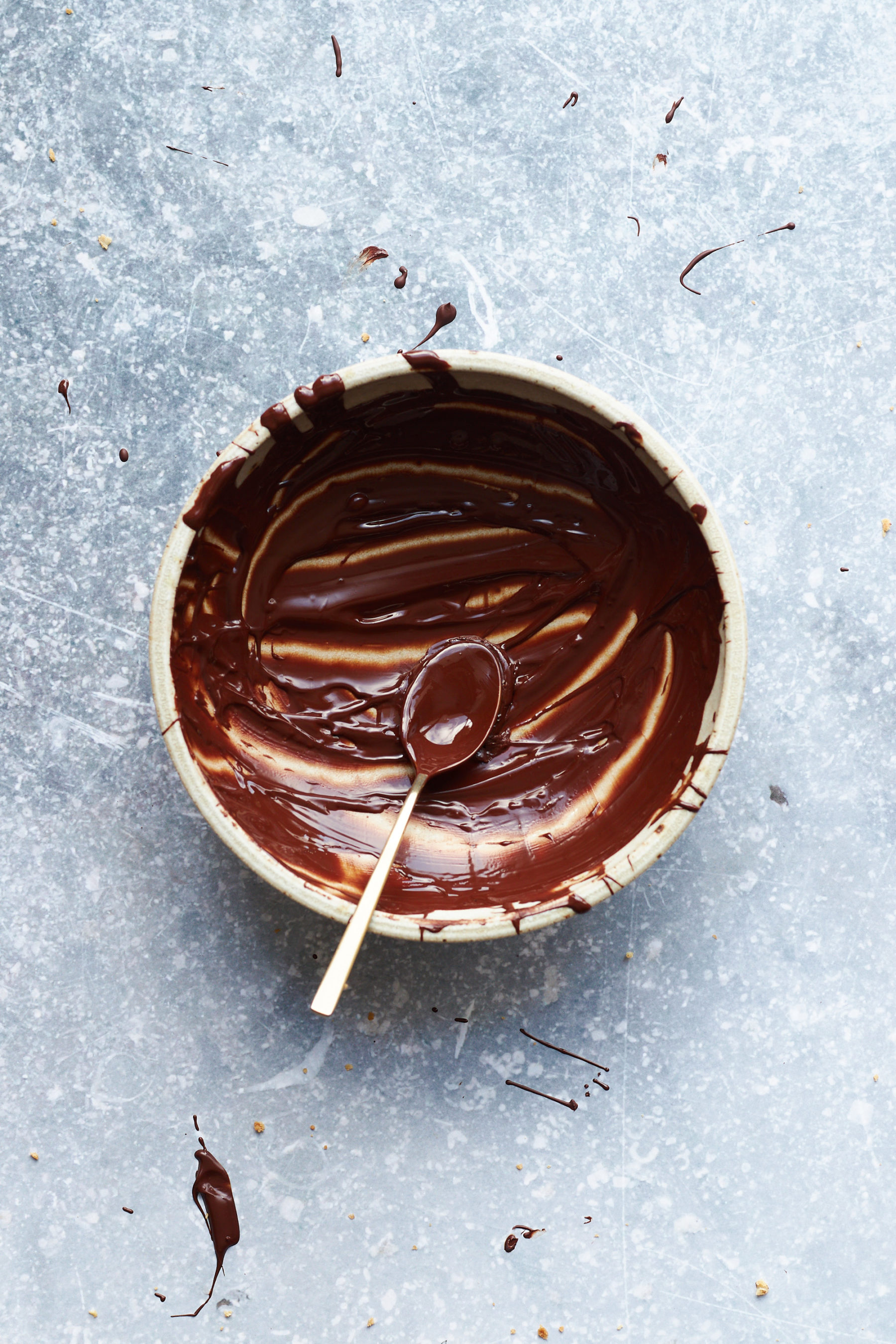
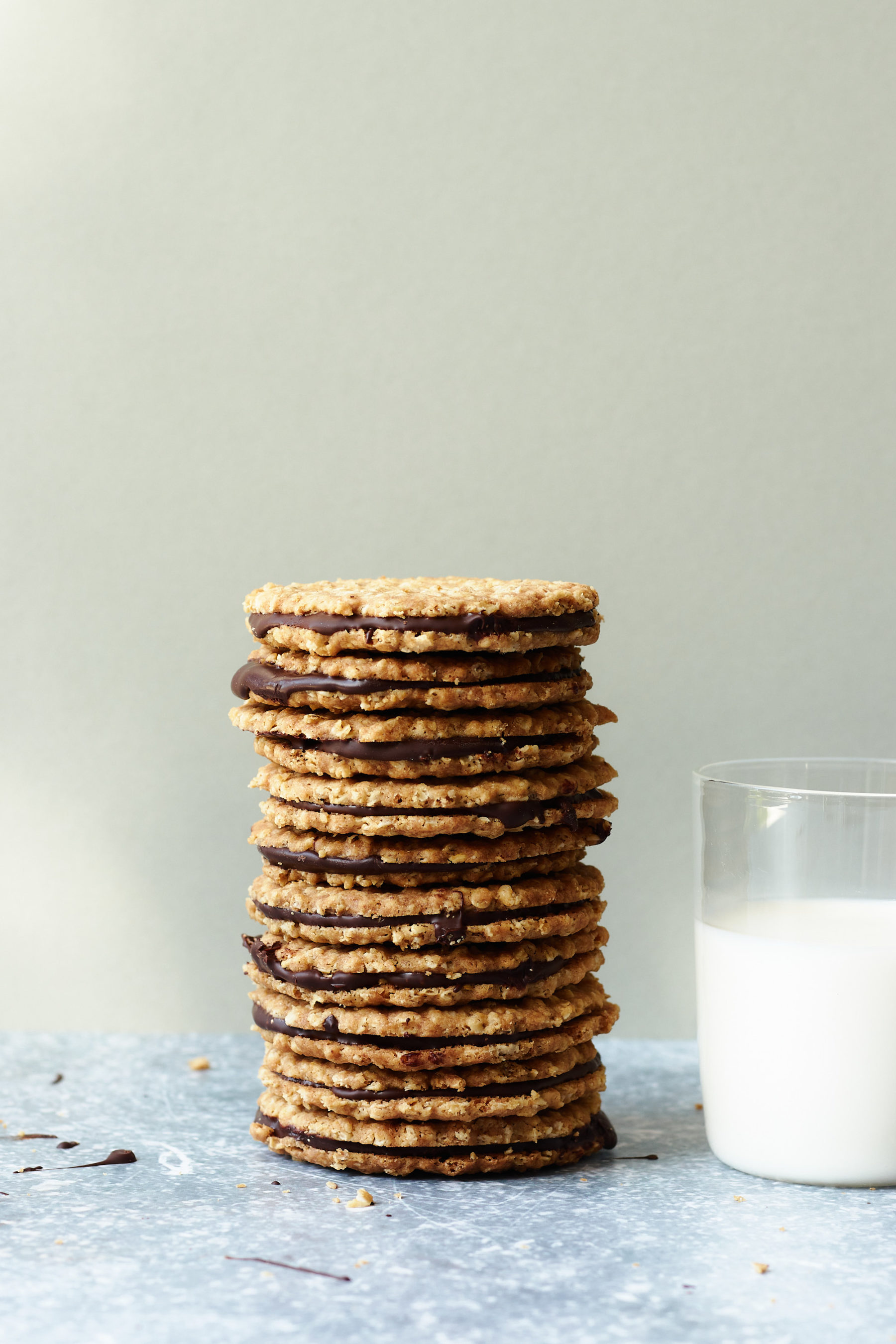
Raising agent
For the most part, I associate raising agents with fluffy sponge cakes and towering scones. Raising agents, however, play a really important role when it comes to cookies and biscuits too.
Bicarbonate or soda, or baking soda, is a raising agent that needs an acid to react, whether that’s cocoa powder, coffee or yoghurt. When the alkaline bicarb meets the acid, carbon dioxide (and water) is produced. This creates air pockets throughout the dough which gives your biscuit a light and airy texture.
When you’re using bicarb, it’s worth noting that it will start to react immediately! Which is why in this recipe I’ve created a bit of insurance and bought us a little bit of time by rubbing in the butter.
So, what is actually acidic?! Well (albeit weakly), pretty much everything. I’ve put it in a fancy infographic for you here:
Although the malt vinegar might seem like the obvious culprit to react with the baking soda, you can see that – except for the neutral salt – all of the ingredients in the oat biscuit are actually weak acids. The proportion of malt vinegar is actually really small and it’s more there for flavour than for chemical leavening, although it does play its part.
When the biscuit goes into the oven and the butter melts, the baking soda becomes hydrated and can begin to react with all the acids. This is when those magical air pockets are created and when that ultra crisp texture is born.
A side note about cultured butter: it’s become really popular in recent years to use cultured butter for absolutely everything – proceed with caution when you’re using raising agents! It’s just worth remembering that cultured butter has a pH of around 5.5 so it will be enough to tip the scales and be reactive.
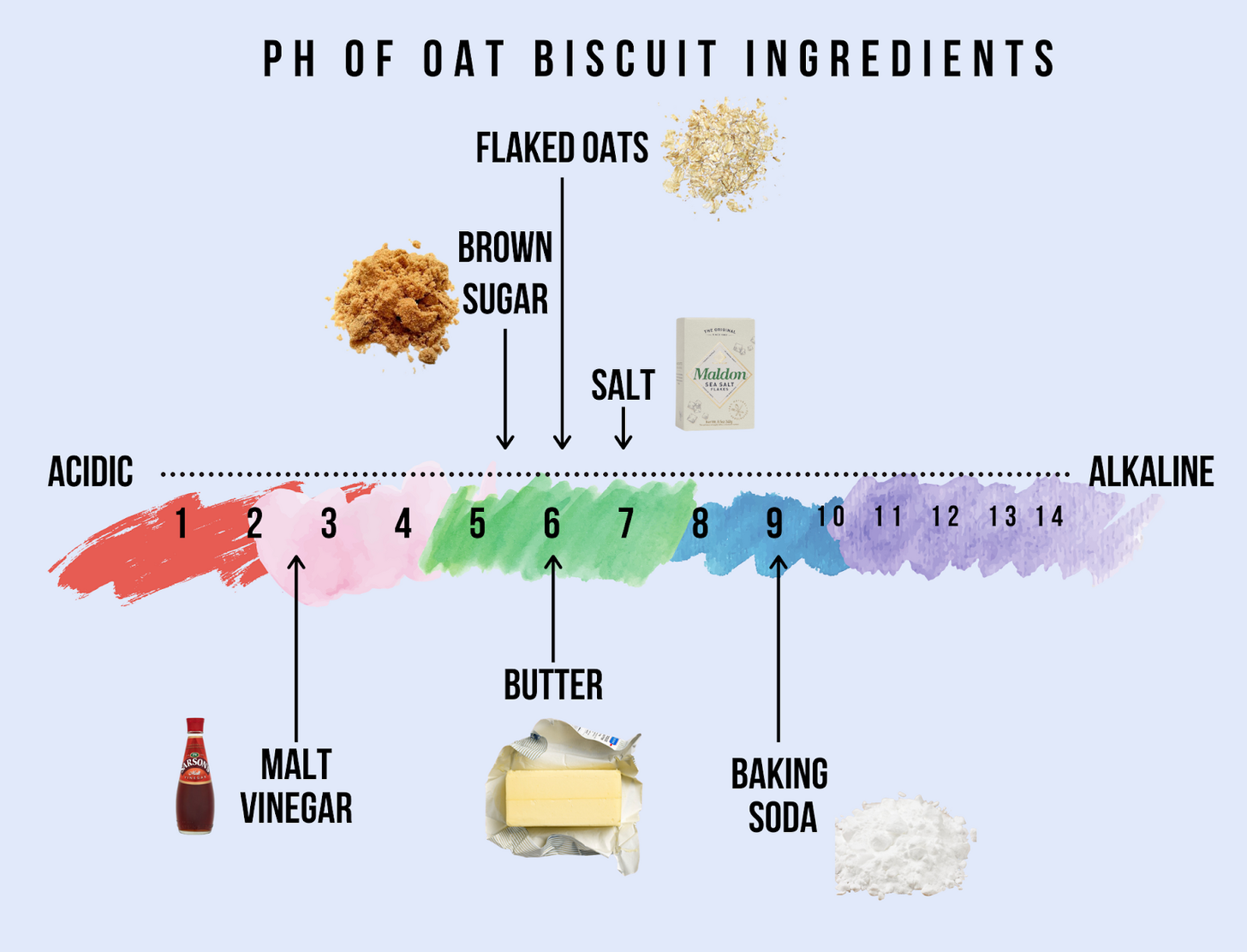
The magical malt vinegar
The malt vinegar is something I’ve taken from my time working with Nicola at Little Bread Pedlar. Although I don’t have her original recipe, I’ll never forget the first time I made her cheesecake biscuit and saw malt vinegar on the ingredients list. Definitely a life changing moment.
There’s something about the slightly astringent vinegar flavour that brings the biscuits totally alive. It made her recipe for digestive biscuits taste more like digestive biscuits than actual digestive biscuits. I’m not sure if that makes sense, but ever since I made that fateful cheesecake base crumb I’ve always added a little vinegar to my oat bases.
Gluten and limiting it
The key to a crisp and short biscuit is to limit gluten formation. We need enough gluten that the dough will hold together, but not so much that the biscuit becomes tough or chewy. Made correctly, these biscuits are ridiculously short!
Oats – naturally – are gluten free, so no trouble there. According to this article by the genius Stella Parks, bulky ingredients like oats smuggle air into the mix, too. As we’ve covered before, flour needs water to form gluten. So, when it comes to building a recipe when you want to limit gluten formation you need to figure out where the water is coming from. For this biscuit recipe, the only water is coming from the butter itself. We’ll cover that next.
The joy of butter and how to introduce it
The first time I made these biscuits they were a little bit too buttery: they had a slightly greasy feel when I picked them up. Once they were in your mouth they were comically buttery and short. And though I loved this about them, I decided these biscuits would be better off being a bit more robust. I would definitely need to reduce the overall butter quantity a bit.
But what about the method?
When I’ve made oat biscuits in the past, I’ve always introduced the fat into the dry ingredients by stirring in melted butter. But for my second attempt, I decided to switch this up a bit and rubbed in half the butter in and melted the other half.
When you use 100% melted butter, there is a chance that your mix will be a bit greasy if things aren’t properly mixed. When you think about butter, it’s important to realise it is basically an emulsion – fat suspended in liquid. When you melt butter, that emulsion is broken – it isn’t the most stable thing in the world!
As for the rubbing in technique, this is a classic gluten inhibiting strategy. By rubbing the flour with fat, you’re literally coating it and physically blocking gluten chains from being able to form. The other benefit here is that you’re also coating the bicarb. This means you’re limiting the immediate reaction from the malt vinegar, saving a bit of fizz for later on!
One last thing to note about temperatures – it’s important not to pour the butter on too hot! Otherwise all your hard work rubbing in the first half of butter will be gone.
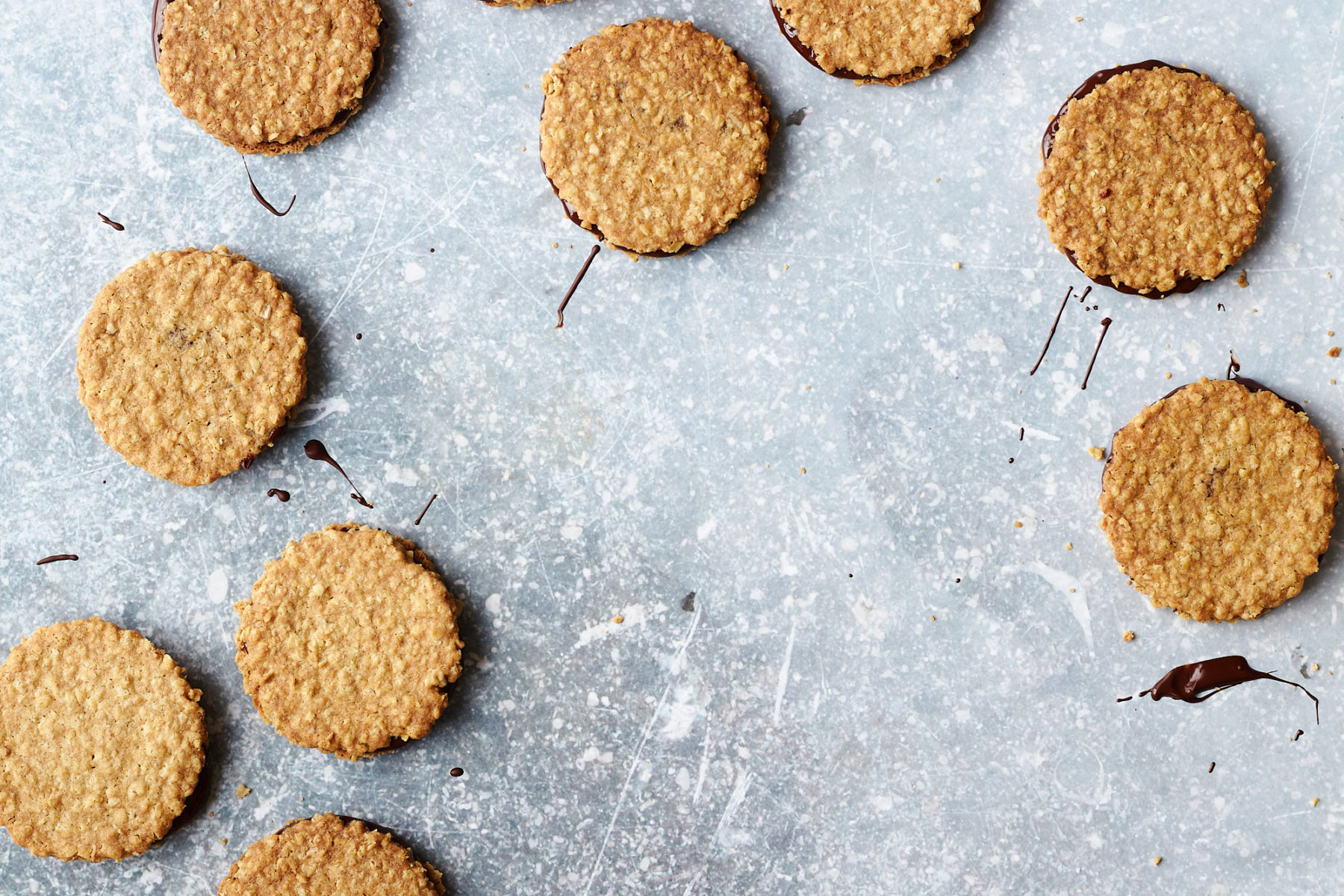
The oats
This biscuit works best using a flaked oat (sometimes called ‘quick cook’ oats – it’s basically a beaten up oat!). If you only have jumbos, then whizz them in the food processor a couple of times to make them more manageable. If you wanted to keep some chunkier oats in there then be my guest! It might make the dough a little bit harder to work with but nothing you can’t handle.
I started off with a 50/50 ratio of flour to oats but I decided to up it 60/40 in favour of oats. It does make this dough slightly more crumbly and a bit annoying when you are cutting out the shapes, but this dough can be reformed over and over again (as far as I can tell) so nothing gets wasted!
The chocolate
You know I always say use the best chocolate possible. And that is totally true. But sometimes the ‘best chocolate possible’ = the most appropriate chocolate for the job.
For these, I used the waitrose essentials 72% belgian chocolate. And I 10,000% mean this as a compliment – this particular chocolate made these biscuits taste like an authentic supermarket/IKEA treat. What I mean is, this chocolate combined with the super short oat biscuit tastes *kinda* trashy but still sophisticated.
Dough handling
My go-to biscuit handling technique is always to roll out the dough between a couple of sheets of greaseproof paper. I tried the technique of balling the dough and then baking straight after mixing but instead of spreading out attractively it just stayed as a little oaty ball. Quite nice, but not what I was after.
Alright, shall we make them? Click below for the recipe.
Read more: 3pm Chocolate Oat Biscuits Recipe
Now you know the science behind it, try baking Nicola’s 3pm Chocolate Oat Biscuits for yourself. Click through for the step by step recipe.
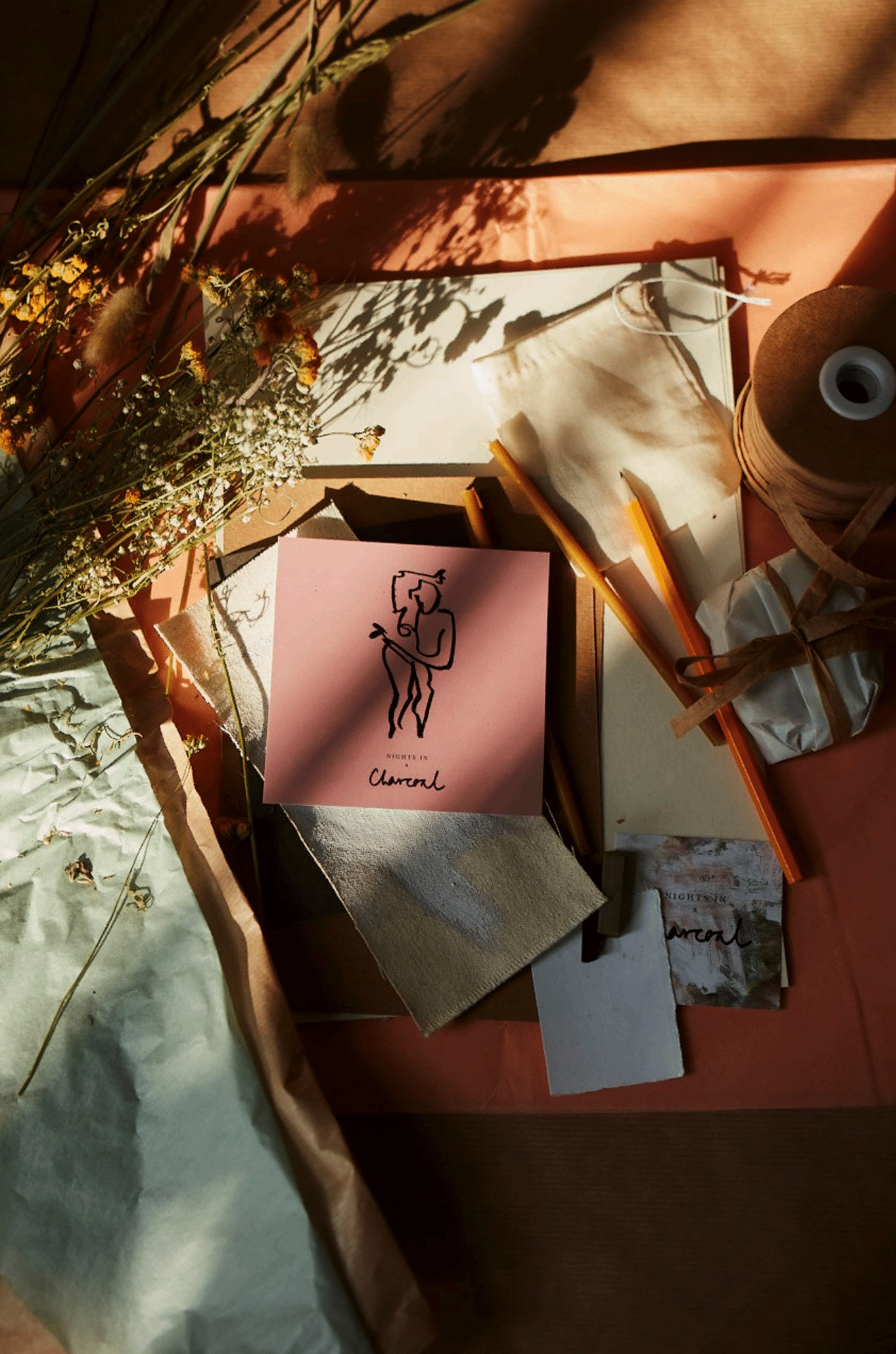
Food stylists Rosie Ramsden & Kitty Coles are the founders of life drawing art club, Charcoal. Having launched at the end of 2018, Charcoal was originally based around evenings of dinner and drawing at Narroway Studio in Hackney, but during the pandemic they turned, as many did, to online classes that gave many a sense of connection and comfort. They’re back hosting live classes, but they’re continuing their classes online too. We had a chat with Rosie & Kitty about their project and how it brings together food, art & design.
Tell us the story behind Charcoal Art Club. How did it all begin? What brought the two of you together?
R: It was a stroke of luck. I was in the mood for small life drawing evenings – book-club style – with friends, and when I mooted it on Instagram it took off. We launched it at Narroway Studio, an hour and a half of drawing with dinner too (cocktails, warm focaccia, a bowl of something warming and usually meringues to finish…).
“I think I speak for us both when I say art has a really strong influence on how we see food. Food styling is a strange job, but one thing I love about it is that it can be so creative. Building a picture with food, just like you would with paints and colours.”
K: Rosie mentioned it to me when I used to assist her on food styling shoots – the idea being to just get a group of friends together to draw, eat, drink and chat. I obviously loved the idea so came along to help cook for the evening, and then it just sort of rolled in to doing a few more, then a few more, and so on. I mainly manned the kitchen while Rosie calmly and beautifully lead the class.
We’ve always thought there’s such a strong relationship between food, art and design. You’re both food stylists so we have a feeling you’ll agree. How would you describe or define that relationship?
K: I went to art school before becoming a food stylist, and Rosie’s an incredible artist as well, so I think I speak for us both when I say art has a really strong influence on how we see food. Food styling is a strange job, but one thing I love about it, is that it can be so creative. Building a picture with food, just like you would with paints and colours.
R: I couldn’t agree more. Part of the reason I fell in love with food styling was so that I could get my hands in, work it like a painting. Working with other people who all have an eye for design is inspiring, and like the life drawing, a whole room of artists (online or in real life) can help you unknot your creativity.


There’s also something so meditative about using our hands both in cooking and in drawing. Do you think that’s played a big part in why we’ve turned to the kitchen and discovered creative hobbies so much in the last couple of years?
R: It’s a good distraction, it makes you feel grounded. Using your hands in a practical way can often be a rare thing when at a desk so when we do it it releases joy and satisfaction.
K: When I first met Rosie, something I really noticed in the way she styles food is the way she uses her hands. You can definitely tell she’s an artist. No faffing about with pipettes or tweezers! We’ve found a lot of people’s interest and enjoyment in Charcoal is being able to use another part of your brain after work. Most people have been at home working all day, and then with a lot of entertainment closed over the last few years, had nothing else to do apart from cook or watch TV. So being able to do something creative, whether it’s cooking or crochet or life drawing, is great for an escape. Also, theres nothing more satisfying than having an end result which you can appreciate/eat/frame.
Rosie, your cookbook The Recipe Wheel is beautifully illustrated with watercolours of fruit, veg and all kinds of ingredients. Do you find that your drawings and art inspire your recipes and styling, or more the other way around?
R: Thank you! One feeds the other, though I definitely have more energy and an urge to work harder after I’ve done a painting. My brain is kicked into gear.
As food stylists, how do you strike the balance between writing recipes that both look beautiful and taste delicious? Walk us through the creative process from developing a recipe to bringing it to life visually through an image. Do you see similarities in the process of drawing or painting?
K: I definitely get very clear ideas about what I want a recipe to look like. But taste is key for me – I wouldn’t add anything just to make it look nice, it’s got to also to make it taste better too. And for me, less is more with drawing and cooking. My strengths lie in the short poses, in the same way my strengths lie in easy, short and simple recipes (my attention span is very short….)
R: I’m actually more last minute with the visuals. I like to play when it comes to the plate, but I’m sure colours and textures come into action well before. Same with art. I’ll mix my colours for an oil painting but it only starts to make sense when its on a canvas (and sometimes it doesn’t too!)
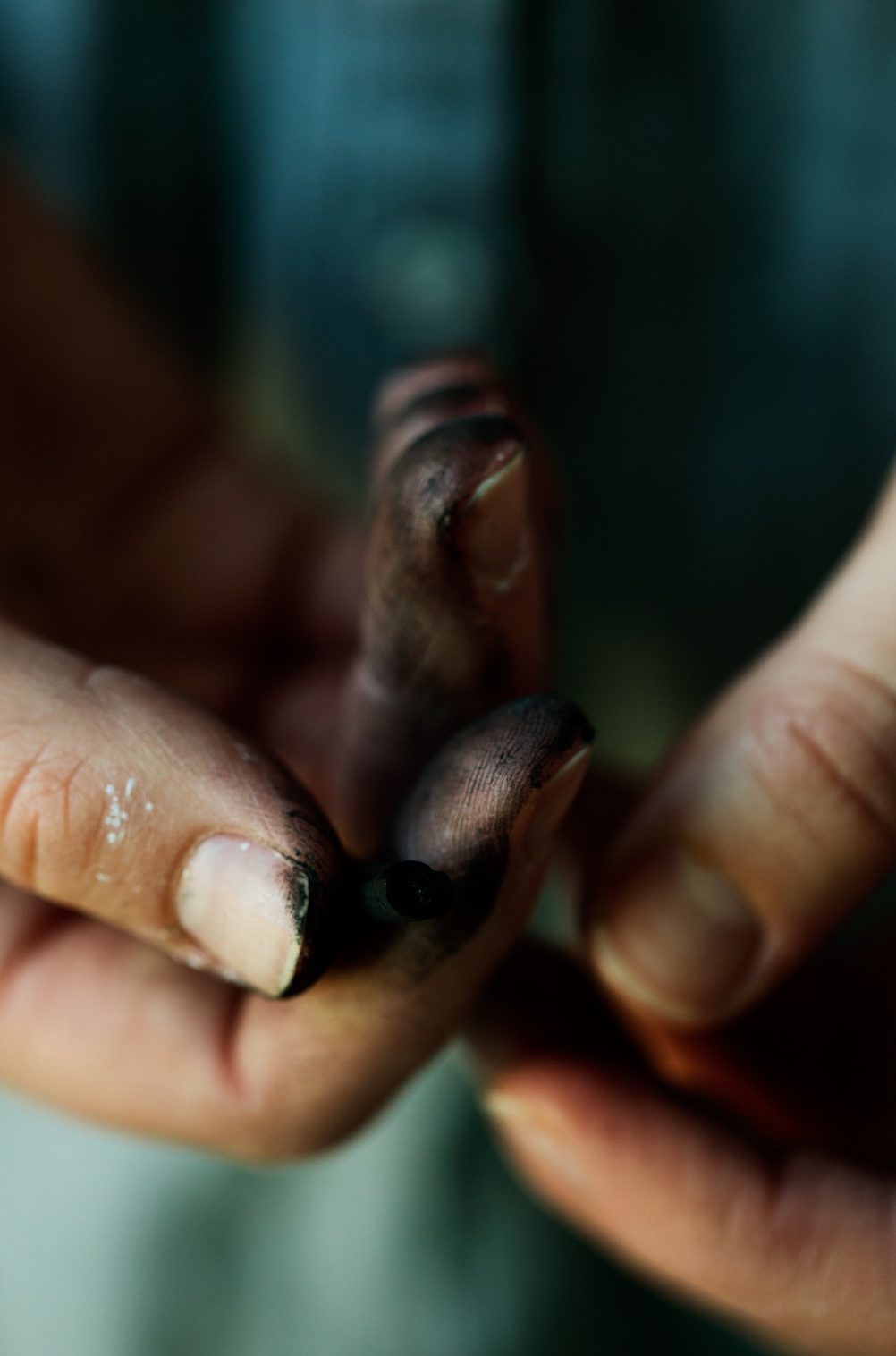
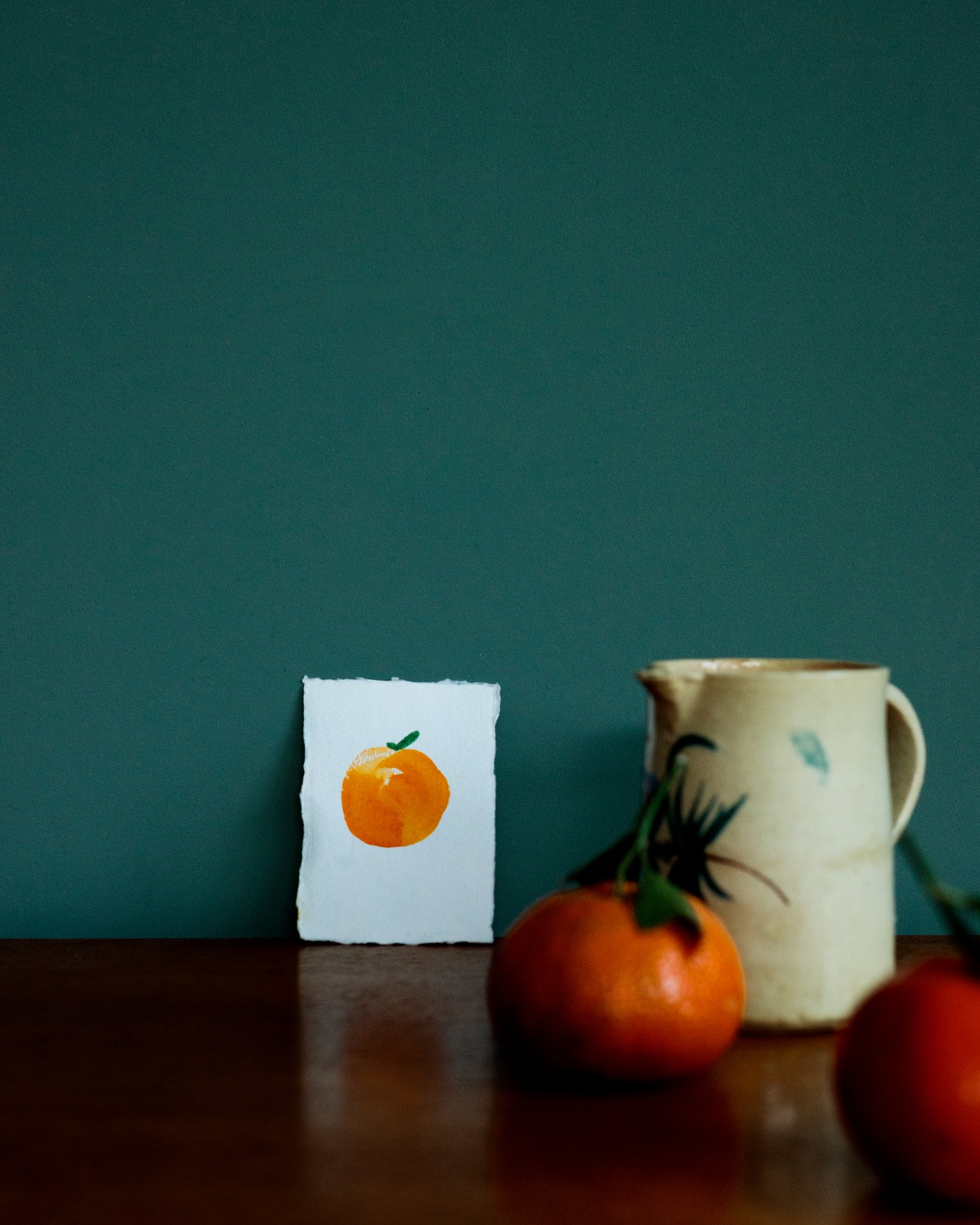
Community is such a big part of both art and food, and of course it’s at the heart of pop-up events like yours. Since you started doing the classes online, how have things changed? Is there still the same connection?
R + K: When we tell people that we now run an online life drawing class, I think people find it hard to imagine. “The model is just on the screen? And I draw what I see on the screen?”. But then they join and see that it’s so cosy and has the best community feeling. There’s something amazing about a group of people all getting together online at the same time – all strangers but having the same interest. We’ve also been able to connect with people all over the UK and even as far as the US which we would have never been able to do before – so we’ll definitely carry on the online classes for as long as we can – to include everyone, and not just Londoners.
We also have a Charcoal membership, so there really is a little community! They come to every class and its so lovely to see familiar faces every week.
If you had to pick one item of food to draw, which would you pick and why? It could be a single ingredient, a dish, anything.
K: Rosie and I both drew each other a little clementine for Christmas a few years ago (we exchanged them the night of our first ever Night In x Charcoal evening). It’s in my kitchen, actually next to a rhubarb, also drawn by Rosie! So maybe I’d say a clementine/orange or even a nice leafy lemon.
The Charcoal Pantry
1. Jarred beans (chickpeas and butter beans always)
2. White Mausu chilli oils (all three of them)
3. Anything pickled
4. Pasta of every shape and size
5. Really good extra virgin olive oil

Gina is a Cotswolds veteran and our go-to on knowing where the best places are to eat, drink and stay are. Her husband grew up there and it’s where the two of them got married, so she knows a thing or two. She’s got plenty of Cotswolds guides on her blog, but she’s put together a special Mini Guide To The Cotswolds here just for us too. Another one for any more staycations you’ve got planned this year.
The Cotswolds is easily one of the quaintest parts of the UK, thanks to its rolling hills and myriad of pretty villages of honey coloured houses. It’s no surprise that many have been flocking to the area as of late, and with an impressive number of gourmet restaurants and luxurious hotels to explore, it’s easily one of the places you’ll find yourself returning to time and time again.
“The Cotswolds is easily one of the quaintest parts of the UK, thanks to its rolling hills and myriad of pretty villages of honey coloured houses.”
Where To Stay: Foxhill Manor
This private country house hotel near Broadway village only has eight bedrooms, each individually designed in elegant colour schemes. Stay in either the spacious Chestnut bedroom which features its own dining room table and plush furnishings, or the Oak suite that boasts ‘his and her’ bathtubs with sweeping views over the 400 acre Farncombe Estate. Indulge in the hotel’s ‘no rules’ policy: guests are invited to eat whenever and wherever they like throughout the property, whether that’s breakfast in bed, or dinner in the cinema. The lack of a formal menu means that you’re welcome to pop into the kitchen and chat with the chefs, who will whip up whatever you fancy, making for a truly special gourmet experience.


Thyme
Cotswolds luxury at its finest, Thyme is a family-owned estate that sits within the village of Southrop, but still boasts 150 acres of ground for guests to roam. Aptly self-described as a ‘village within a village’, the hotel encompasses several converted cottages and farmhouses dotted across the estate, as well as a spa, outdoor pool, cookery school, and stunning Ox Barn restaurant where chef Charlie Hibbert is at the helm. Bedrooms are extremely luxurious, featuring pastel furnishings, and jewel-coloured bathtubs.

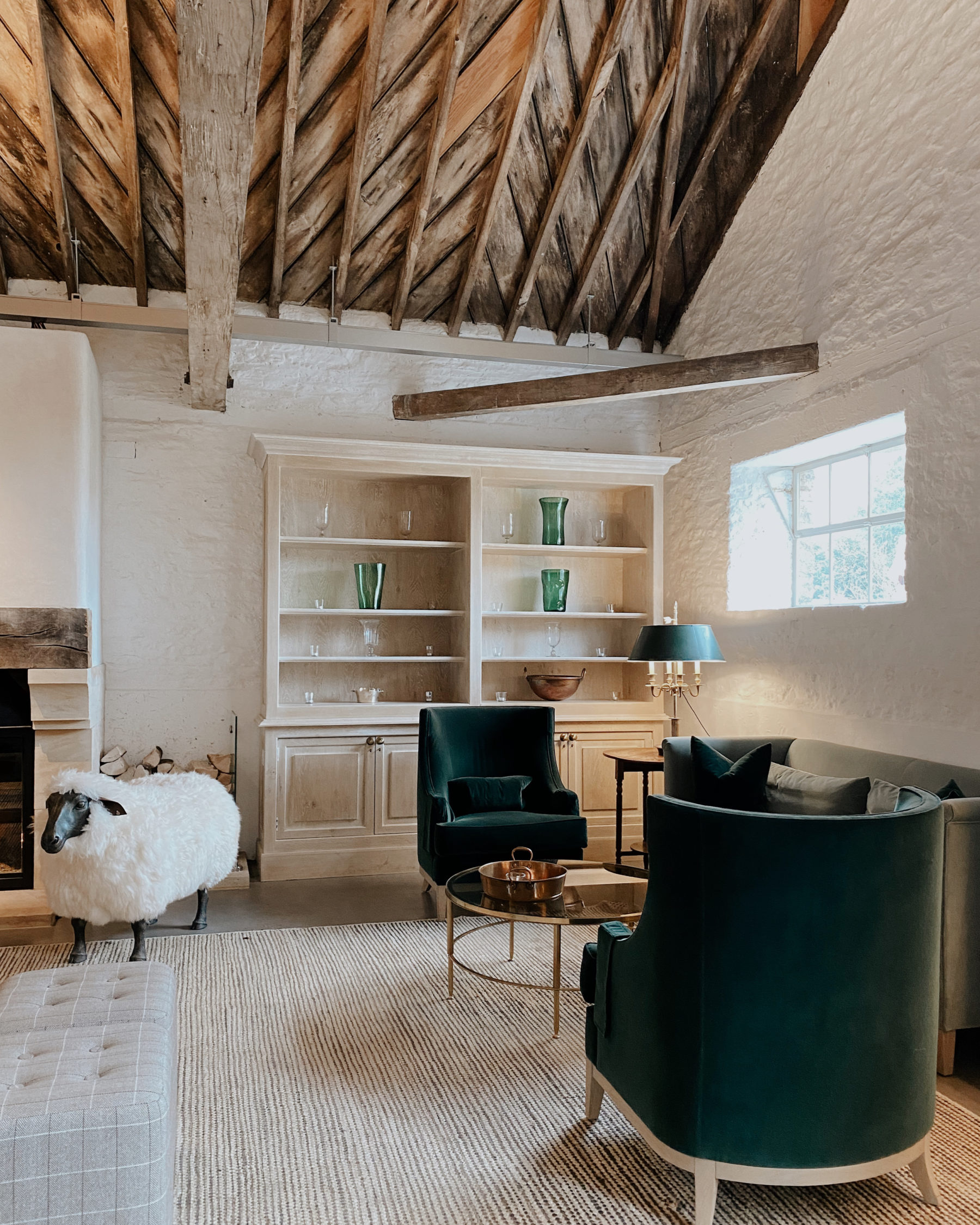
The Rectory Hotel
Another of my favourite countryside escapes, The Rectory Hotel is a stunning Cotswold conversion offering 18 boutique bedrooms decorated in a laidback luxe style. With beautifully kept gardens and an outdoor pool, this is the perfect location to visit in summer. From enjoying afternoon tea al fresco, to sumptuous dinners and tasty breakfasts served in the Scandi-style conservatory, this is definitely a gourmet getaway for those that want to kick back and relax – and eat well whilst doing so.


Where To Eat: Daylesford, Kingham
A Cotswold favourite, Daylesford farmshop and deli sprawls across an impressive estate in Gloucestershire, encompassing various cottages that you can stay in, as well as their famous Bamford spa. Pop in here for lunch in the deli (menu options include hearty salads and sandwiches), or pick up some gourmet ingredients and tasty supplies in their farm shop. Their smart-casual restaurant, Trough, is also a great dinner option.
The Feathered Nest, Nether Westcote
This gourmet pub-restaurant offers delicious British food in a cosy setting: expect beautifully presented dishes which are hearty and filling, such as crispy buttermilk chicken and homemade gnocchi, as well as a traditional roast on Sundays. Don’t miss out on their homemade beer bread with whipped Marmite butter, and make sure to leave room for the divine desserts.
The Bell Inn, Langford
One of my favourite restaurants EVER, let alone in the Cotswolds, The Bell Inn at Langford is a gourmet restaurant with rooms offering up delicious pub grub: think lip-smackingly tasty British classics, served in a cosy and rustic setting. Don’t miss their homemade flatbread starters, and make sure to save room for their puddings too.
Read more: Gina Goes To
Gina has a knack for finding the most beautiful plays to stay, eat and explore all over the UK. In fact, she’s just published a book called ‘British Boutique Hotels’ – it’s a great guide to work through for your own staycations, or even to give as a gift. There are also plenty of other tips for the Cotswolds and more on her blog, so head over there for a read.
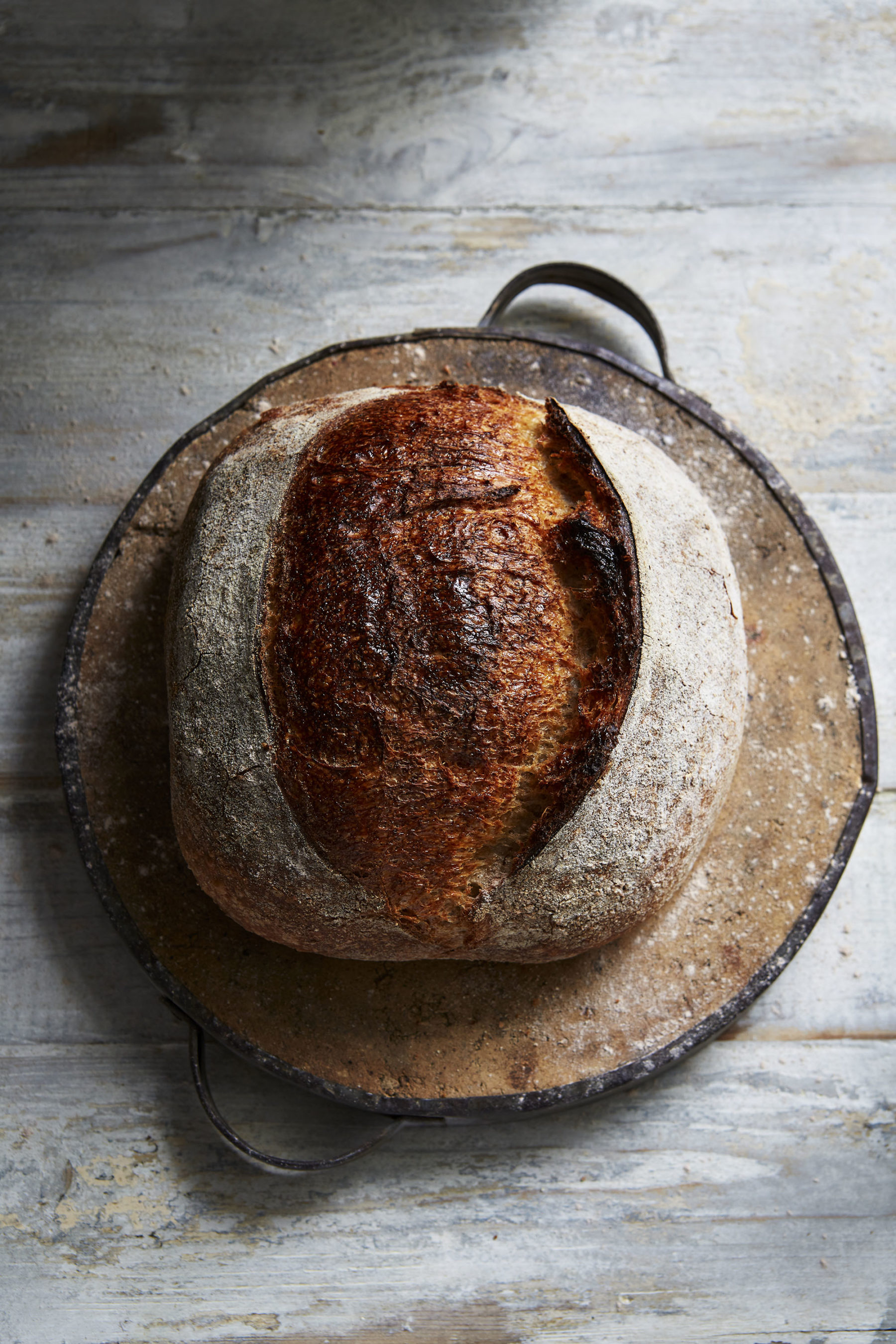
East Finchley’s Margot Bakery was founded by Michelle Eshkeri. A self-taught baker, she would make bread at home for her family in North London and so she decided to turn it into a business of her own. She published her first cookbook Modern Sourdough in 2019 which features recipes not only for her trademark loaves of the good stuff, but also sourdough pastry and other innovative ways to use a sourdough starter (think cheese scones). We’re lucky enough to share a few of Michelle’s recipes on Another Pantry, and she’s also given us her guide to shaping sourdough which will help you make The Margot. Once you’ve made it past the hurdle of mixing and folding the dough for your very own sourdough loaf, here’s how Michelle guides you to shape it before you leave it to proof…
Very lightly dust a work surface with flour and turn the dough over onto the flour using a dough scraper to help you lift it cleanly. The top ‘skin’ side should now be downwards and in contact with the floured work surface and you should have the sticky side facing upwards.
“Gently, and without pulling at the dough, fold the bottom third up to the middle like you are folding a letter. Fold in the left edge to the middle and then the right side and finally the top down so all four sides have been folded in, creating a neat parcel.”
You now have a roughly square piece of dough in front of you. Starting on the right side. ‘Stitch’ the dough down its length three or four times towards you so that you have knitted the left and right side together by taking some dough from each side and connecting them in the middle. It’s like doing up buttons on a baby’s cardigan! You will have a rectangle of dough in front of you with the short sides at the top and bottom.
For a batard loaf roll the dough away from you from the bottom of the rectangle as if you are rolling up a Swiss roll. You are aiming to have an even piece of dough, uniform in size.
For a round loaf fold the dough on itself towards you, more or less in half, and then turn it over onto an unfloured surface so the seam-side is down on the work surface. Flour your hand and lightly flour the top of the dough then repeat the pre-shaping technique, using a dough scraper, turning the loaf around in a single position until it forms a uniform round shape with some tension. This is quite a tricky technique to master and it takes practice – the first few times you do this you may have the dough sticking to your hands.
Dust the shaped loaf in a mixture of white rice flour and whole wheat flour and place seam-side up in a banneton dusted with rice flour or into a bowl lined with a tea towel generously dusted with rice flour. Proof according to the recipe.
Read more: Modern Sourdough: The Margot Loaf
Michelle Eshkeri’s cookbook Modern Sourdough explores so many innovative ways of incorporating sourdough into both sweet and savoury bakes, featuring recipes from her home kitchen and her much-loved North London-based Margot Bakery. £22, White Lion Publishing. Photography Patricia Niven. Click for the full sourdough loaf recipe.
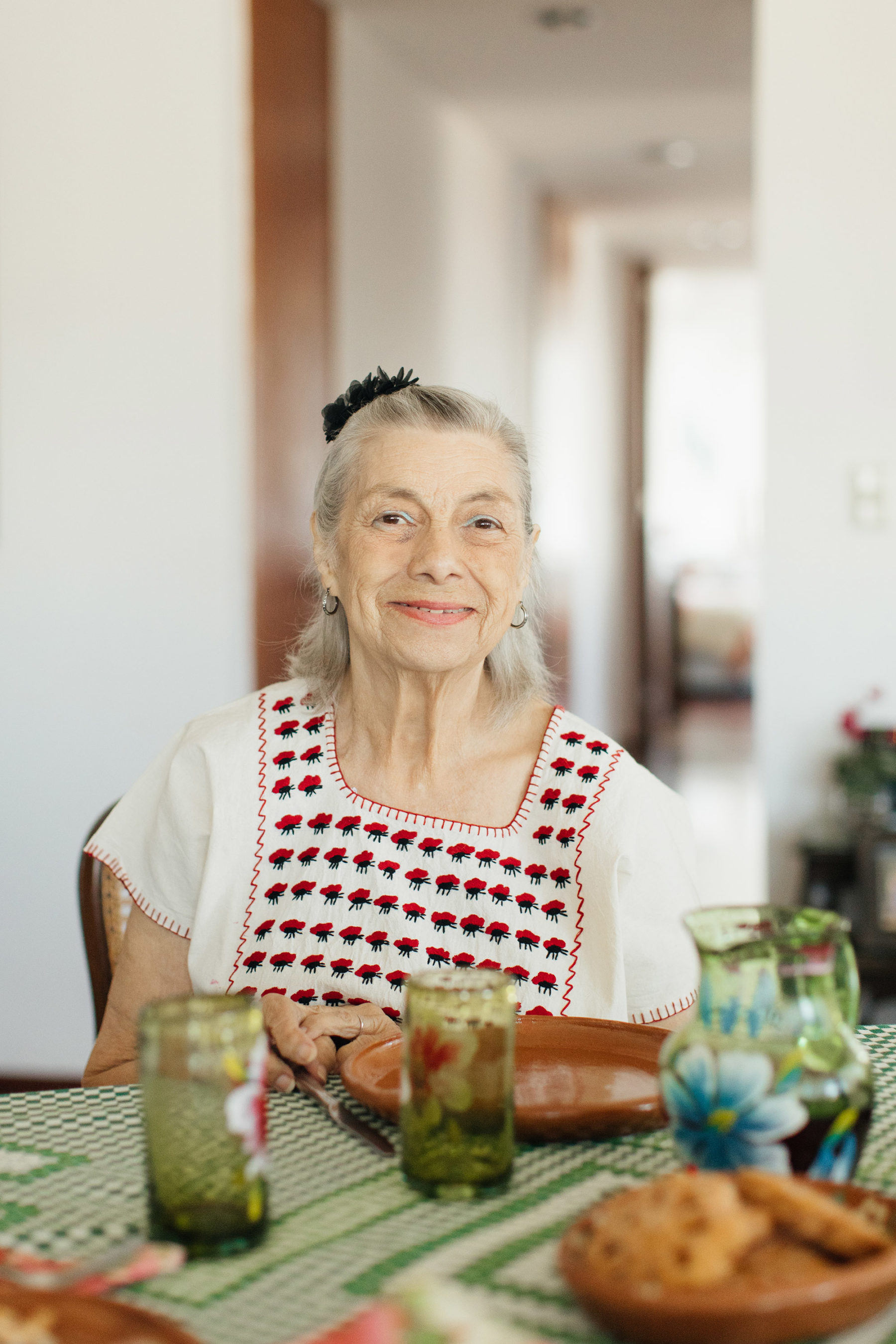
IskIt began with our networks. We put feelers out, asked friends if they had a special grandmother we might be able to spend a day in the kitchen with. Soon enough, people got wind of what we were doing and started to reach out.
It began with our networks. We put feelers out, asked friends if they had a special grandmother we might be able to spend a day in the kitchen with. Soon enough, people got wind of what we were doing and started to reach out.
Travelling from the UK to Greece, France, Spain, Italy, Croatia, Poland and way further to Cuba, the USA, Mexico and Russia to cook with grannies of all ages, background and ethnicities for a weekend each time, we’ve picked up more than just culinary tips on our great gran mission.
“There’s an intimacy to be found in someone’s kitchen… we form a bond with every woman we cook with.”
The life experience that we’ve been gifted through this project is extraordinary. Leaving a grandmother’s home after spending a day or weekend with her in her kitchen has become much like leaving our own grandmothers. They hug us tight and insist we come over again and we walk out with such warmth – in heart and belly. It is at these moments that we realise how important the project we’ve embarked on together is, picking up wisdom from women who know what it is to have truly lived.
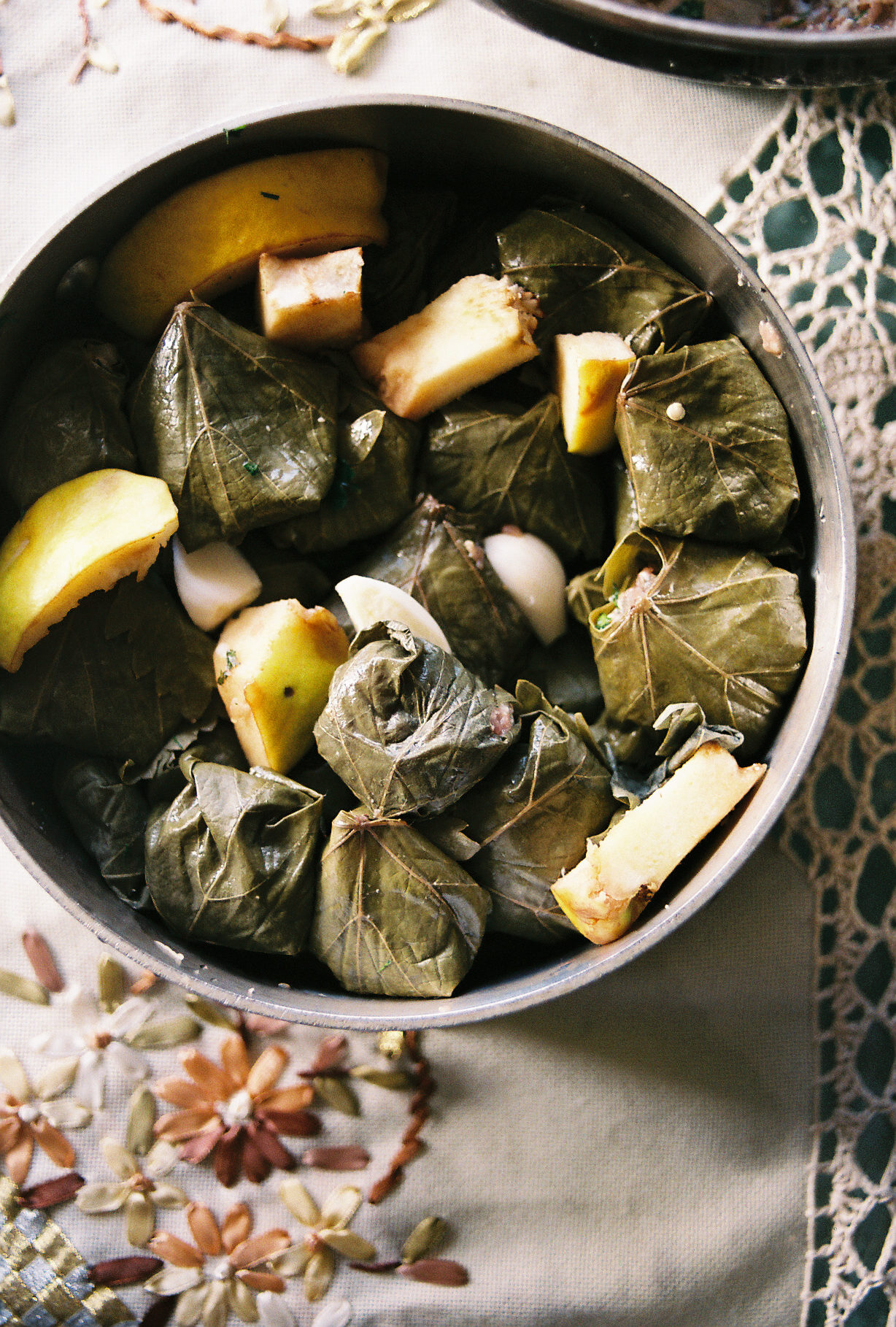
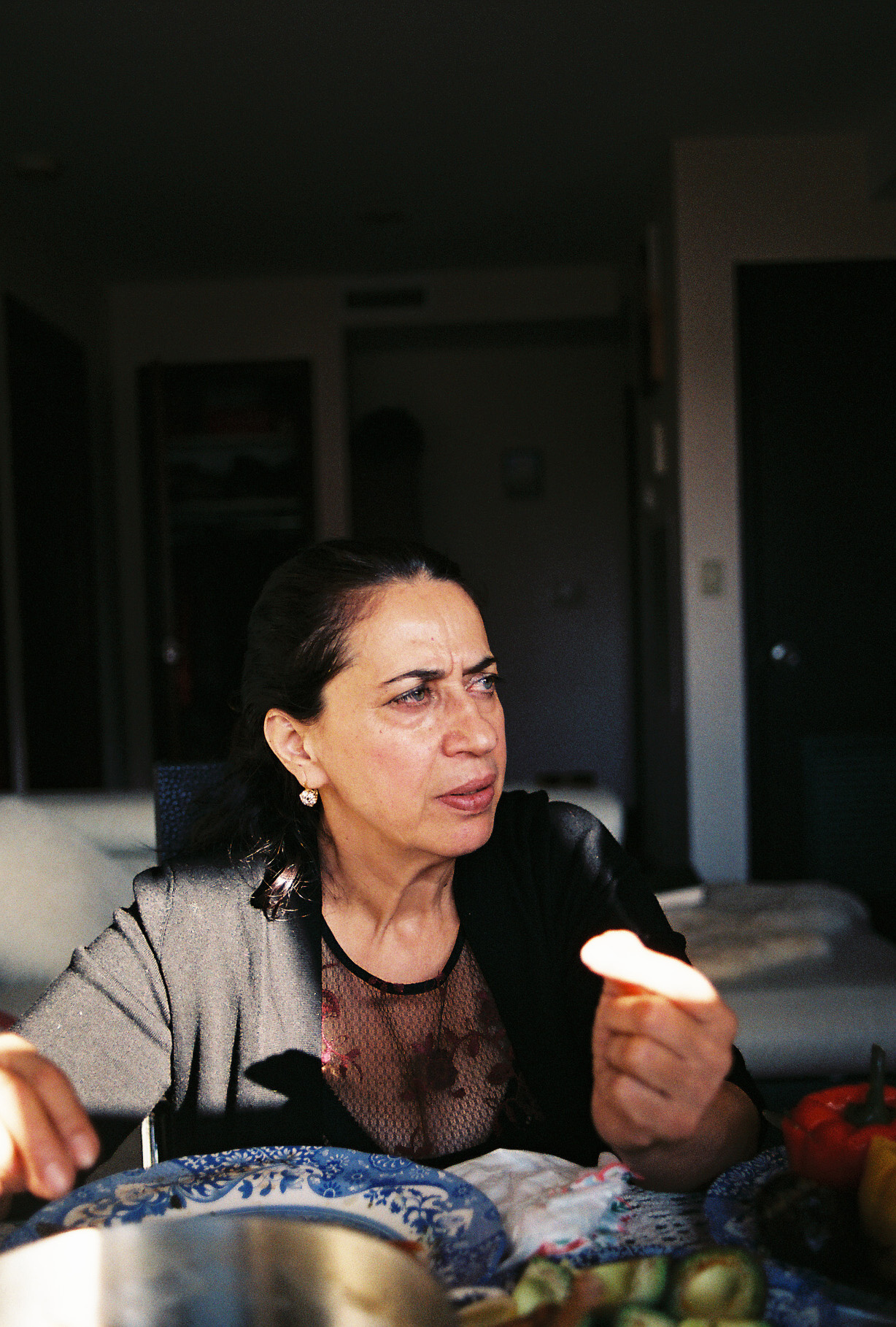
We expected to pick up some good recipes doing Grand Dishes, we never could have imagined what we would learn about love, life and relationships. We have laughed hysterically and cried a lot. There have been grannies wearing pink wigs, chainsaw demonstrations, a whole tray of pasta bake dropped, a platter of peppers slipping off a granny’s head and onto the floor. They give as good as they get. They tell us exactly what they’re thinking.
There’s an intimacy to be found in someone’s kitchen. Invited into these grandmothers’ homes for a weekend, from a Sicilian farm to a cacti-populated private island in Croatia, sharing simple tasks in a kitchen filled with the smells and flavours of a dish loaded with special memories, we form a bond with every woman we cook with.
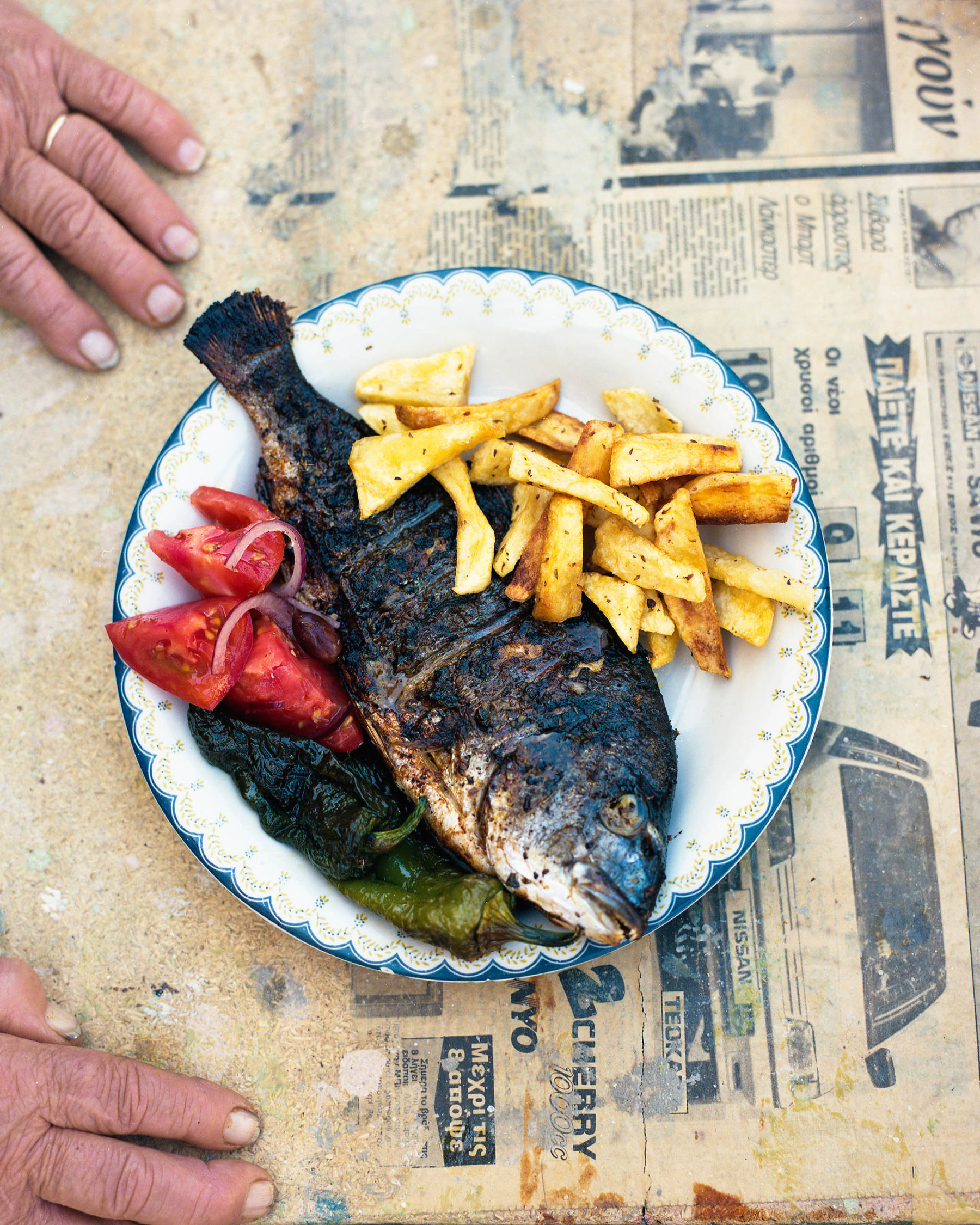

That bond, quite naturally, has led to questions we both internally have been churning over and over. “How did you know when you’d met ‘the one?’” “What makes a happy marriage?” “How do you deal with grief?” and “How does it really feel to be old?”
Both in our late twenties, we looked to these grandmothers for the answers we haven’t lived long enough to give to each other. Open, willing and with so much wisdom, the answers came over a boiling pot, a finely chopped onion or a table creaking with the weight of the many dishes we’d set upon it. They are now sealed forever in this book, along with the recipes that have seasoned these womens’ lives.

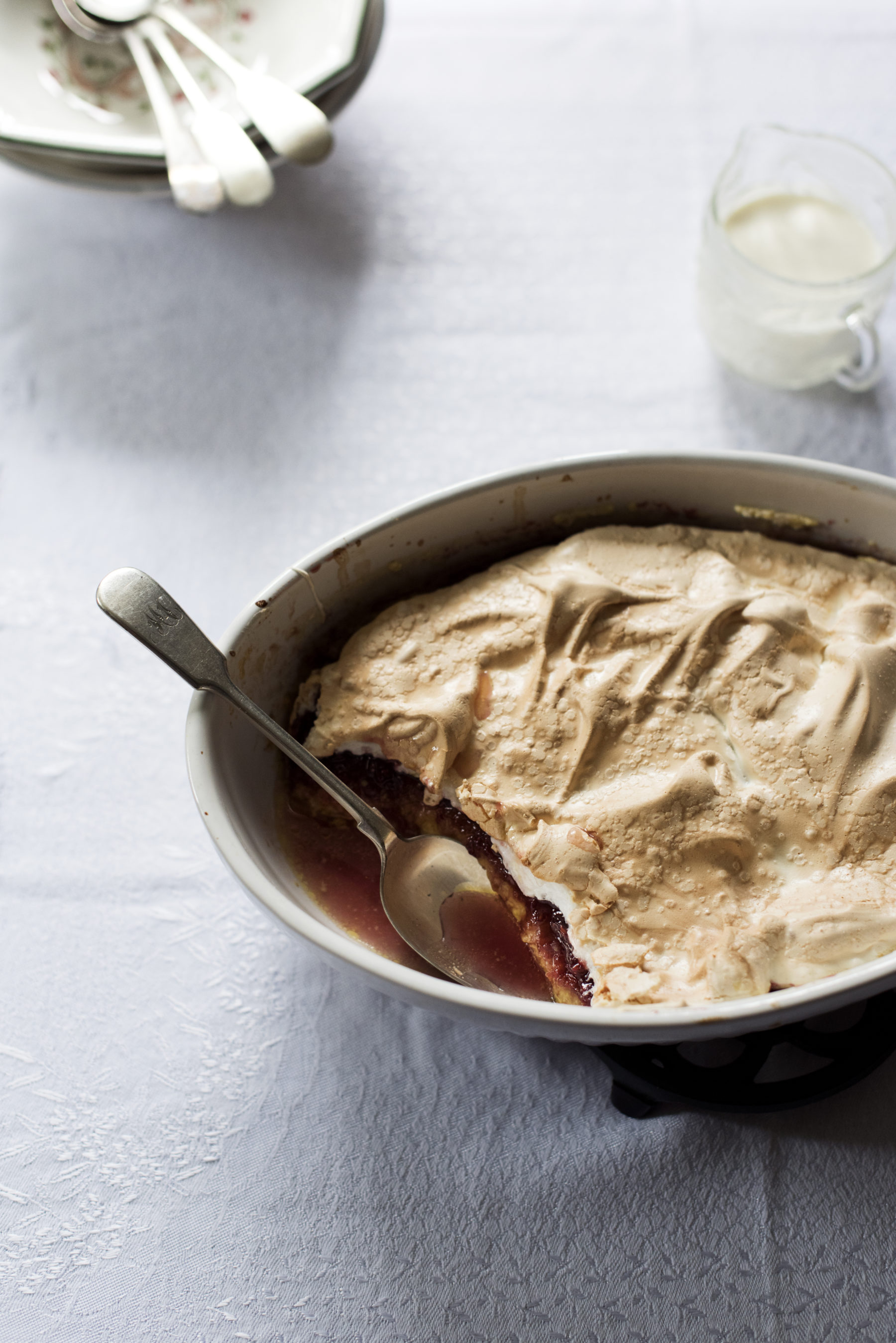
They have changed the way we think, reminded us of the importance of looking forward, being kind, of love and legacy (be it through children, good deeds or special recipes) and that strange, shocking things could happen at any moment. Ultimately, that we should not worry so much about what we don’t yet know and just feast on life.
